Richard Hayes Harnett - First Commodore of the Royal Prince alfred Yacht Club and designer of the yacht 'australian' - based on the lines of a mackerel


Richard Hayes Harnett Snr (1819-1902)
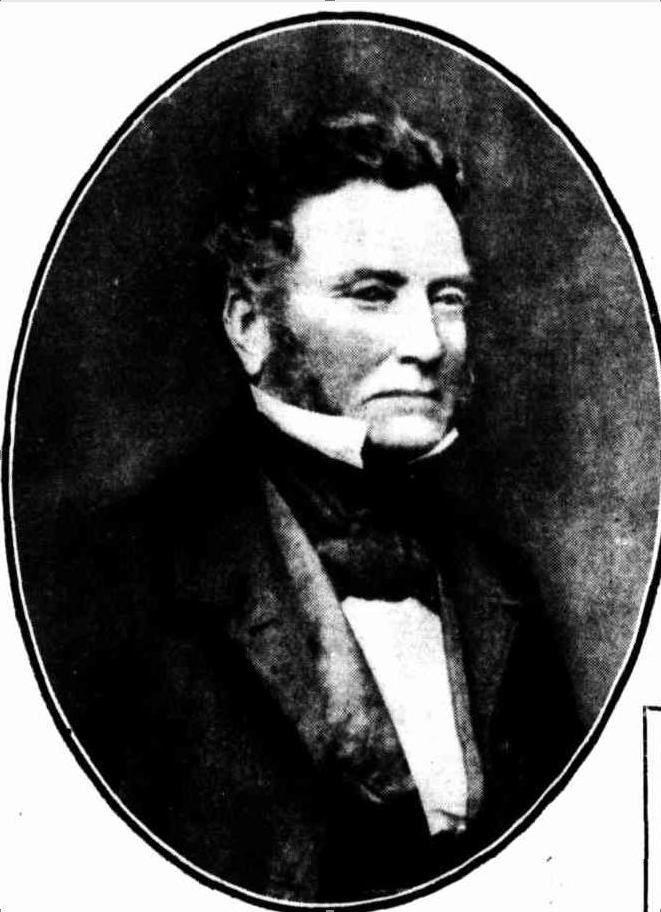
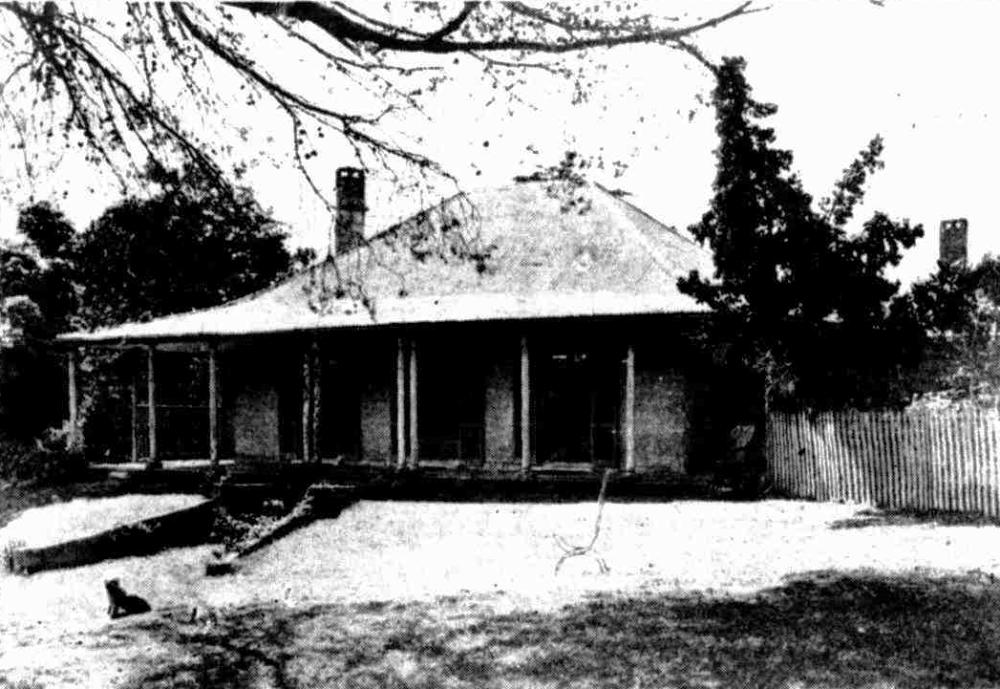
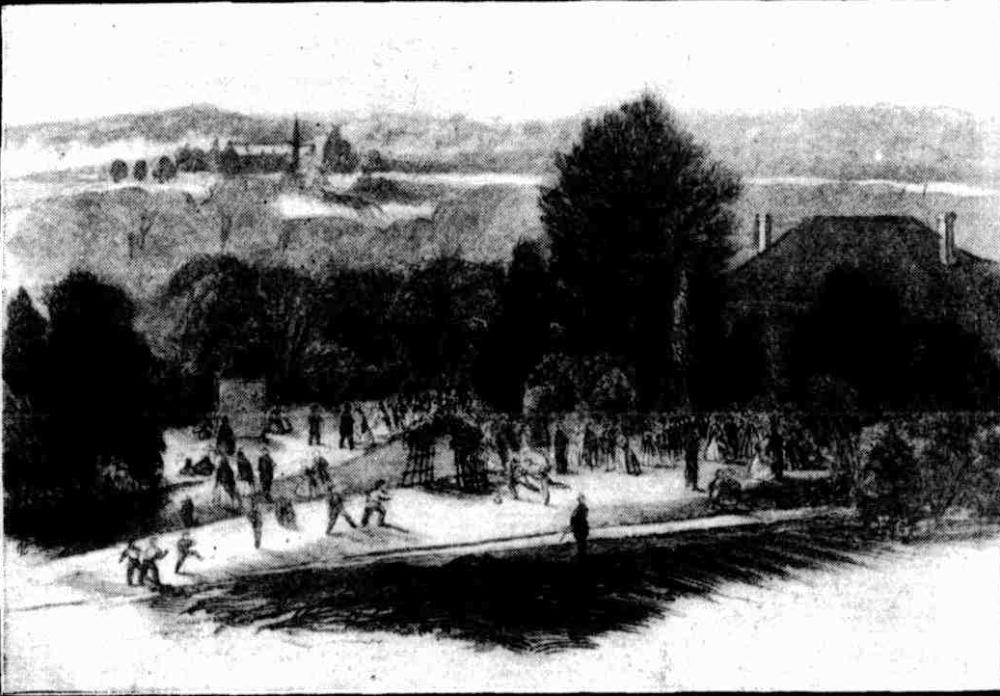
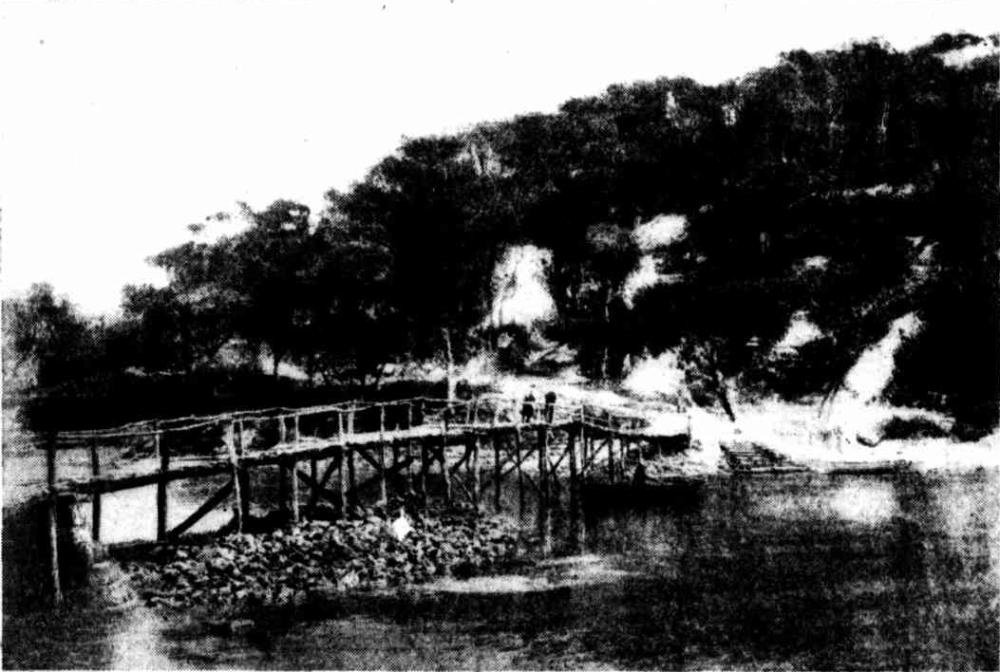
Sydney News.
THE ANNIVERSARY OF THE COLONY.
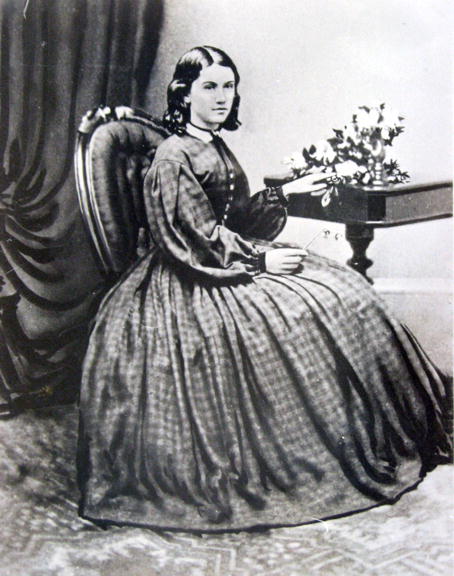
BOROUGH OF MOSMAN.
NOTICE is hereby given that Alderman Richard Hayes Harnett, the younger, was duly elected Mayor of the Borough of Mosman, on Friday 9th June, 1893.
CHARLES COWLES, Alderman.
J. G. CANNON, Alderman.
BOROUGH OF MOSMAN. (1893, June 20). New South Wales Government Gazette (Sydney, NSW : 1832 - 1900), p. 4881. Retrieved from http://nla.gov.au/nla.news-article222202911
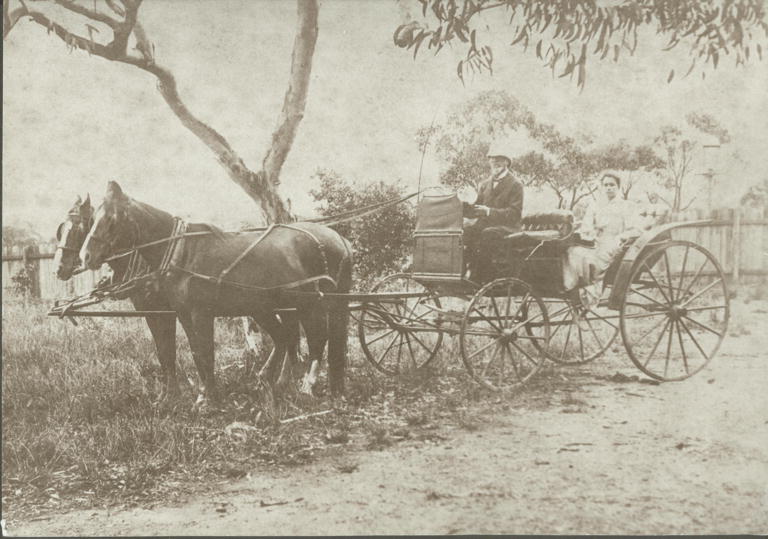
DEATH OF MR. RICHARD HARNETT.
Mr. Richard Hayes Harnett, a colonist of upwards of 60 years, died on Saturday afternoon at his residence, Comeen, Orchard-road, Chatswood, at the age of 82 years.
Mr. Harnett was a native of Cork, and in 1840, when a young man, arrived in this State in the sailing ship China. After a short stay in Sydney he visited Maitland, and then Wellington, where he passed some years in pastoral pursuits. Returning to Sydney, Mr. Harnett entered the old firm of Row and Co., general merchants, and shortly after started business in Hunter-street as a commercial broker. Deceased was perhaps best known as one of the pioneer settlers on the North Shore, and in 1871 he entered into partnership with the late Sir Alexander Stuart, with whom he was associated in opening up the whole district. He first resided at Blue's Point in 1847, but removed to Gore Hill in 1861, where he remained until 1872. In that year deceased removed to Mosman. Mr. Harnett started the first ferry service which ran to Mosman, and also controlled two lines of omnibuses running in the district, the one to the fortification at Middle Head and the other to Chatswood and Pymble, then almost bush land. When Mr Harnett first settled at Mosman there were but few residents there. Until 1884 he made the roads that Mosman possessed, and owned there a large quarry, whence some fine stone was hewn for Sydney and Melbourne buildings. He also constructed the first wharf at Neutral Bay. Deceased became second Mayor of Willoughby in 1868. He was at one time connected with the Pyrmont Brewery and the Hall of Pharmacy, King-street. Mr. Harnett assisted in the movements that secured the Milson's Point railway and the tramway services on the north side of the harbour.
As a yachtsman Mr. Harnett was well known, for he acquired a name in the early days as a skipper and designer. It was he who in 1867 designed and built the old Australian, which was launched at Woolloomooloo in that year. She was of the present type of craft, and was looked upon at the time as a remarkable boat ; but so impressed was Mr. Harnett with the merits of his design that he gave the lines of the boat to the late Mr. George Thornton in 1868, who took them to England, where they were accepted by a firm of builders. Amongst many of his yachting friends and rivals were the late Messrs. Alfred Fairfax, Isaac Josephson, and F. J. Jackson. Mr. Harnett was an original member of the Prince Alfred Yacht Club, was one of the promoters of the Anniversary Regatta, and was connected with other sailing clubs. Of the pioneers of yachting in Sydney Mr. James Milson is now the sole survivor, but up to the time of his death Mr. Harnett shared with him that honour.
The funeral took place on Sunday, the interment being made at St. Thomas' Cemetery, North Sydney, the service being conducted by the Rev. S. H. Childe. It was of a private nature. The chief mourners were :-Messrs. R. Harnett, Rolla Harnett, Cecil Harnett (sons), J. W. Gibson and H. G. Cambridge (sons-in-law), and Lawrence (nephew) ; and amongst the few friends present were Messrs. E. J. Sievers, H. C. Catt, H. Finn, C. Ludowici, L. Finn, P. Dettman, C. Wilcox, D. Murphy, N. Dowling, and J. McLean. The funeral arrangements were carried out by Mrs. P. Kirby and Son. DEATH OF MR. RICHARD HARNETT. (1902, November 18). The Sydney Morning Herald (NSW : 1842 - 1954), p. 5. Retrieved from http://nla.gov.au/nla.news-article14505932
The Australian was built and launched long prior to 1867 - in fact, Mr. Harnett's brother in law, Daniel Sheehy, was sailing her in 1859 in the November Balmain Regatta and then again in the Boxing Day Regatta of Woolloomooloo. Interestingly in November she is listed at 4 tons, by December she has 6 tons. The Balmain Regatta was her first 1st:
BALMAIN REGATTA
If fair weather, tolerably good sport, and a numerous attendance are to be regarded at essential to the satisfactory management of a regatta, the promoters of the Balmain aquatic festival of this year have certainly been eminently successful, and may justly...
Sixth Race.— To start at half-past 12. For all yachts (centreboard boats excluded). Coarse, from moorings round flagboat in Johnstone's Bay, thence round lightship and Sow and Pigs, back round flagship, thence round Shark Island, and back round flag ship. Time for tonnage, quarter-minute per ton. Prize, £30 ; entrance, £3 3s.
Australian, 4 tons— D. Sheehy — Light blue 1
Mischief, 7 tons— T. J. Dean— Red crops 2
Ida, 7 tons— I. Josephson— Blue, with white star
Annie Ogle, 9 tons— T. 8. Rountree— Tricolor
Surprise— 6. C. Burt— Dark blue.
In consequence of the Australia having taken up a wrong station some delay took place in getting the yachts away. On the signal bung given, the Ida took the lead, with the Annie Ogle second, who unfortunately carried away her jib halyards immediately after starting; she, however, maintained her position round the first boat, with Surprise third, Mischief fourth, and Australia last, and in this order they stretched down the harbour in gallant style, but in again heaving a eight round Miller's Point, Australia was leading, with Mischief second, Surprise third, and Annie Ogle fourth close aboard.
After rounding the flagship they again made down the harbour for Shark Island, but the Mischief was unable to overhaul the Australian, who continued to lead the way and finally won, beating the Mischief by 25 seconds. The Annie Ogle carried away her topmast in the second round, which, of course, deprived her of all chance. It may be remarked that as it was a leading wind up and down, the various yachts had no chance of displacing their weatherly qualities. The winner was loudly cheered oncoming in, although the result took everyone by surprise. Apropos of this race, we may notice a truly smart set of seamanship on the part of the Mischiefs crew, which reflects on them the greatest credit. This yacht after the race was decided, was again standing down the harbour when on passing round the stern of the flagship with all sails set, one of those inevitable little boats that arc ever in the way at regattas, unfortunately get athwart ber hawse ; three or four persons were in her, and in another second the Mischief must have passed over her, when the crew with a gpneral spring were over the bow*, ond with main force pushed the boat clear of the bobstay,and thus saved net only wet jackets, but possibly the lives of one and all in her. The Mischief held on her course amid the hearty cheers of the visitors on board the flagship. ...BALMAIN REGATTA. (1860, December 1). Sydney Mail (NSW : 1860 - 1871), p. 5. Retrieved from http://nla.gov.au/nla.news-article166692329
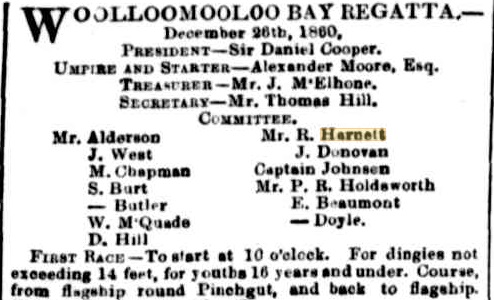
.jpg?timestamp=1556004593038)
Advertising (1860, December 26). Empire (Sydney, NSW : 1850 - 1875), p. 1. from http://nla.gov.au/nla.news-article60504011
A VISIT TO HARNETT'S FALLS. MOSSMAN'S BAY, NORTH SHORE.
THE inhabitants of Sydney will be surprised to hear that within two miles from Woolloomooloo Bay, across the harbour, are to be found cascades of unrivalled beauty, one hundred feet high, as broad as a small river, and hitherto unknown perhaps to any but the owner of the land and a few stray visitors, taken there accidentally as I was, when out for a sail in his yacht the Australian, built by himself after his own original design, without keel, sharp at both ends alike, as a wedge, and destined, when once in proper trim, to deck his festive board with many a graceful silver trophy of her unequalled speed and his own nautical superiority, which, even without such a test, is undisputed on the waters of Port Jackson. But this is a digression, and now to the Cascades.
The entrance to Mossman's Bay, between Karibilli Point and Bradley's Head, directly opposite to Carthona, is extremely bold and picturesque, the guns on each battery I should suppose being intended more for ornament than defence, as Captain Loring has well pointed out the means of defending Sydney must be by keeping an enemy outside of the Heads, as he advises, and also proves that n frigate's broad-side would sweep away any of our forts, gunners and all, without much injury to herself, to say nothing of strong crews landing at each fort, taking it in the rear, overcoming the isolated, unprotected gunners, and turning the guns against the town. On the right, perched up like an eagle's nest in the craigs of Athol, is the marine villa of that name, " Athol," the seat of Richard Underwood, Esq., than which a more pleasantly situated, more convenient, and elegant marine residence could not be found. It is a perfect rus in urbe, and when partaking for a few hours of his well known hospitality, we have found work for the gun, the naturalist, and the florist, having fallen in with quail, snipe, lowries, enormous snakes, and a profusion of waratahs, the queen of Australian flowers, as large as sunflowers, and springing from solitary rocks in such quantities that we were tired of gathering them.
The motto of the marines will do for Athol, "Per mare, per terras." It is to be reached in a quarter of an hour from Potts' Point, and in an hour on horseback, crossing in the steam ferry at Billy Blue's Point, and riding five miles through a perfect fairy-land of flowers, and verdure, rocks, and caverns, including a close view of Middle Harbour and the bold shores of Port Jackson leading to it, with a road equalled in goodness by none in Sydney: this is also the overland route to Manly Beach, which should be accomplished by every lover of fine and unfrequented scenery.
Mossman's Bay from the entrance appears like an oblong square, about half a mile to its head, with thickly-wooded sides and deep water throughout. Rocks studded with countless oysters are the attraction to the hungry pic-nickers who have left the traces of their incursions by relics of ancient sardine tins, pale ale bottles, and Henfrey's soda water, in any quantities.
Landing at the head of the bay on the righthand side, are several large deserted buildings, formerly belonging to a whaling establishment, of which traces of heavy machinery for heaving down whalers alongside and repairing them are still visible.
A new life is now being infused into this secluded spot by its spirited owner, Richard Harnett, Esq., from whom "the Falls" we are about to describe take their name. He has nearly finished a large house and a row of cottages ; has dammed up the . head of the bay, made an excellent road inland leading towards the main road at North Shore, cleared much of the ground, and, before long, Ave should not be surprised to find a second Manly arise around it to offer fresh attractions to the citizens of Sydney, without the nauseous process of crossing the Heads, but with all the other ad-vantages of a suburban marine residence, easy of access in all weathers, and only two miles distant from Middle Harbour, which is at present to most people a terra incognita, or a sort of loto divisos orbe Uniannos, but not long destined to such solitude, when Mossman's Bay will be thrown open to public usefulness.
Following the road inland for a quarter of a mile, amidst the chirping of birds of varied plumage and endless variety, we were sometimes startled by the rushing amongst the greenwood of large guanas, several feet in length, which called to our mind, in shape only, the celebrated Rockhampton alligators, recently exhibited in Sydney ; the hissing of a stray snake would vary the scenery, and butterflies in gorgeous attire surrounded by all the smaller fry of the insect world, reminded one more of the forests of South America, where nature is said to excel in the picture of wild organic life. Suddenly the rushing of impetuous waters enlivens the ear, and a cold, crystalline streamlet, meandering through a bower of emerald foliage pilots the way to Harnett's Falls, and suddenly we emerged into a delicious cool grotto, surrounded with creepers and ever-greens, into which the foaming torrent precipitates itself over a broad ridge of rocks fifty feet high, overlapping each other almost like a staircase, and presenting all sorts of fantastic shapes, worn so from the perpetual action of the water on their substance : the ascent by the side of this fall to the summit being performed, we found a second fall of about twenty feet, not vertical as the first, but so mixed up with trees, rocks, and flowers, with water inter-mingling with all, that it offers a pleasing contrast to the first and last fall, which, being another perpendicular leap of thirty feet in a direct line, completes the entire height of these magnificent cascades, in all about 100 feet by about thirty broad, which, to be seen to advan-tage, must be visited the day after heavy rains have swollen the waters to an unusual extent, and caused the Cascades to assume their real proportions, and be seen in all their grandeur and reality.
The coup d'oil from the extreme summit of the Cascades, where we stood on flat rocks as even as pavement and looked tight over into the foaming cauldron below, surrounded with trees, creepers, native flowers (of which we counted twenty distinct varieties), the view almost shut out from everything except the fulls below our feet-render this spot one of the most picturesque and romantic not only around Sydney, but, perhaps, unequalled in its peculiar features in the colony.
The Willoughby Falls I described last year are far inferior in every respect ; and to the lovers of nature and rugged scenery, or even to the dullest apathetic intellect, no one can return without a sense of wonder and delight from a visit to Harnett's Falls, at Mossman's Bay, North Shore. J. B. A VISIT TO HARNETT'S FALLS. MOSSMAN'S BAY, NORTH SHORE. (1860, January 10). The Sydney Morning Herald (NSW : 1842 - 1954), p. 2. Retrieved from http://nla.gov.au/nla.news-article13035394
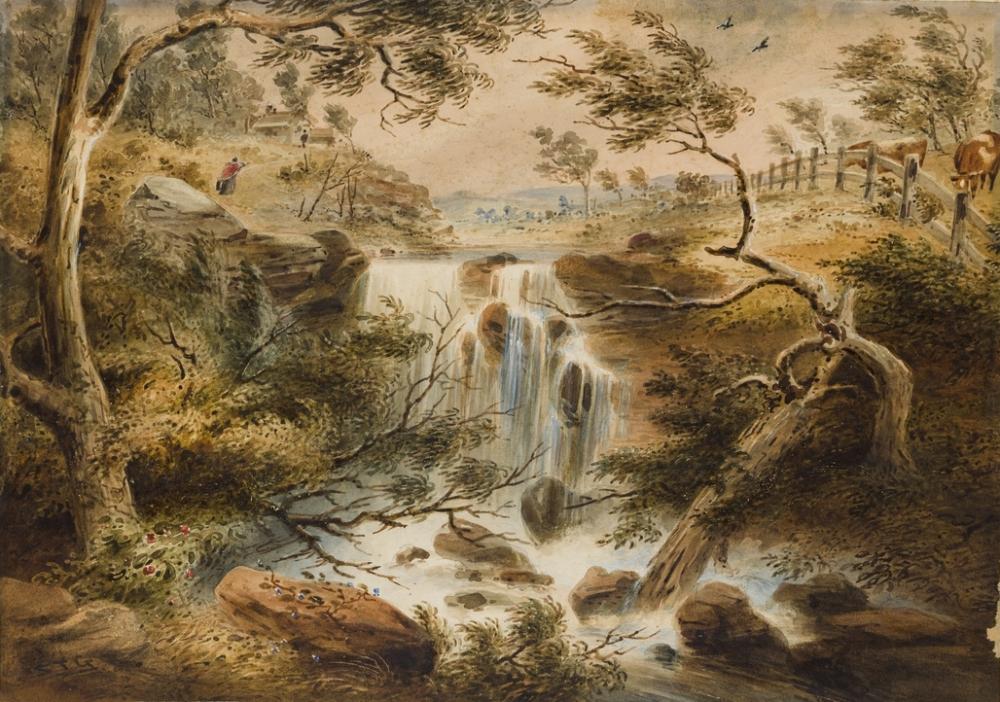
Harnett's Falls, Mosman Bay, 1874 / Samuel Thomas Gill, Image No.: a6243001, courtesy State Library of NSW.

Yachting Past and Present, Prince Alfred Yacht Club. By FOR'D-HAND. NO. IV.
THE advertisement which the founders of the Prince Alfred Yacht Club inserted in the 'Sydney Morning Herald of October 15, 1867, gives no indication of the importance to which that institution has since attained. It is in modest terms, and runs as follows: — 'Mosquito Yacht Club. Boat-owners wishing to join, please meet at M'Grath's at 8 to-night.' It appears from the first annual report, subsequently issued, that the club was not established 'in any spirit of rivalry to the Royal Sydney Yacht Squadron, but in order to promote the interests of yachting by meeting an existing want, viz., a club which would embrace small yachts, such as were ineligible to join the already established club, or of which the owners preferred joining another club.' The necessity for such a club was a real one, as will be understood when it is remembered that, at this time, the Squadron did not admit to its 'register boats under five tons measurement, under the old Thames rule.
In accordance with the advertisement, the following gentlemen met at M'Grath and Punch's Hotel, King-street: — T. Strickland. L. Windeyer, J, Graham, -- Gray, J. R. Walters, P. Brown, P. J. Clarke, R. C. Boake, W. G. Langley, — Lomaxi, W. E. King, and — Cox.
Mr. Strickland took the chair, and the meeting, knowing well what it wanted to achieve, lost no time in coming to a decision that a club should be formed, and in passing Mr. Walters' motion, — 'That the club should be designated the Prince Alfred Yacht Club.' And so, to adopt a metaphor understandable of boating men, the club came smoothly off the slips, and took the water for the first time.
As the nucleus of its fleet the following boats were entered on the register: — The Australian, Lurline, Dora, Spray, Scud, Cruiser, and Flying Scud. Among other business transacted was the choosing of club flags, these being an ensign and burgee of white with a red cross.
The first general meeting was held at the above-mentioned hotel on October 1867, and, after a long sitting, was adjourned to the 28th, when the rules of the club were discussed, and finally settled. Among these may be mentioned a rule to the effect that all yachts racing in a club match should be manned entirely by members of the club, and also one of personal interest to the secretary, which authorised that officer to keep a register of all yachts for sale, and to receive a commission of 25 per cent, on the purchase money of boats sold. Neither of these now appears in the club rules. Mr. Strickland was elected commodore till the annual meeting, which was set down for the following January.
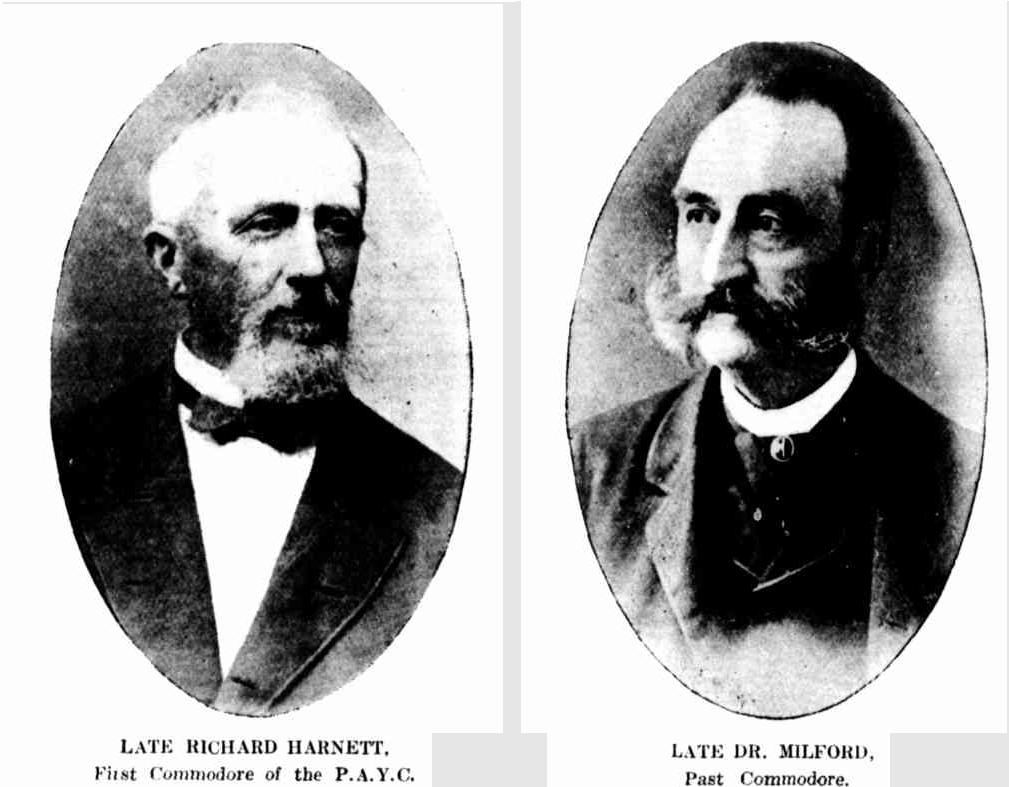
LATE RICHARD HARNETT, First Commodore of the P.A.Y.C. LATE DR. MILFORD, Past Commodore.
The opening cruise took place on December 7 following, and it appears from the 'Herald's' report of the function that the following boats put in an appearance: — Australian, Gitana, Daisy, Ixion, Emma, Lurline, Royal Oak, Irene, Galatea, Dora, and Spray. These, however, did not comprise the whole of the club's fleet, as the number then on the register was 20.
Mr. Strickland was in charge of the gathering, flying his pennant from the Australian, and when he hoisted his signal of 'Make sail' at the rendezvous in Lavender Bay the boats got under weigh in a port and starboard division. By the time the fleet had beaten down to Bradley's Head in the north-easterly breeze the weather had begun to look dirty, and the order 'to part company' although, as it turned out, was not necessary, was, at any rate, a prudent one. The report forms an interesting note on an aspect of the weather in these waters of ours which the boating man of to-day will be able to comprehend: — 'The order to part company was followed by a general lowering of sails and making snug for a 'buster.' Close-reefed mainsails and storm jibs speedily took the place of the fine weather sails which were spread a few minutes before. The north-east breeze died- away, and, almost simultaneously, a light puff from the southward followed; the scud broke over the city as if the next instant would see Port Jackson lashed into a white foam, and then, strange to say, the storm went off in a north-westerly direction. Some shook out their reefs, and sought their moorings, while others, believing the worst had not yet come, kept under snug canvas. It was, at the worst, only a thunderstorm, and after the wind hauled round again to the north-east it blew rather sharply, and sent down a deluge of rain, such as must have benefited the land, even though it made those afloat without waterproofs very uncomfortable, and effectually damped the termination of the day's sport, rendering the intended visit to the vice-commodore a proceeding more honoured in the breach than the performance.'
The report, however, seems to be hardly correct in referring to Mr. Strickland as the vice-commodore. The first annual meeting was held on January 2, 1868, when Mr. Richard Harnett was elected commodore, and Mr. Strickland, who had taken so active a part in the formation of the club, received second flag. The following officers were appointed: — Hon. treasurer, Mr. Langley; hon. secretary, Mr. Gray; comitteemen, Messrs. Brown, M'Taggart, Boake, Merriman, Graham, and King; and auditors, Messrs. Windeyer and Walters. Of these good men and true, who formed the first officers of the club, mention should be made of the commodore. In Mr. Richard Harnett the club had found, to use the words of the 'Herald's' report, 'a yachtsman well qualified for the post,' an enthusiastic boating man, and a clever skipper. He was also a designer of bold and original ideas. He showed that he had the courage of his convictions when he built that remarkable vessel, the Australian, whose extraordinary success against boats of much larger tonnage proved the value of his judgment in the matter of yacht form. (Continued on Page 1311.)
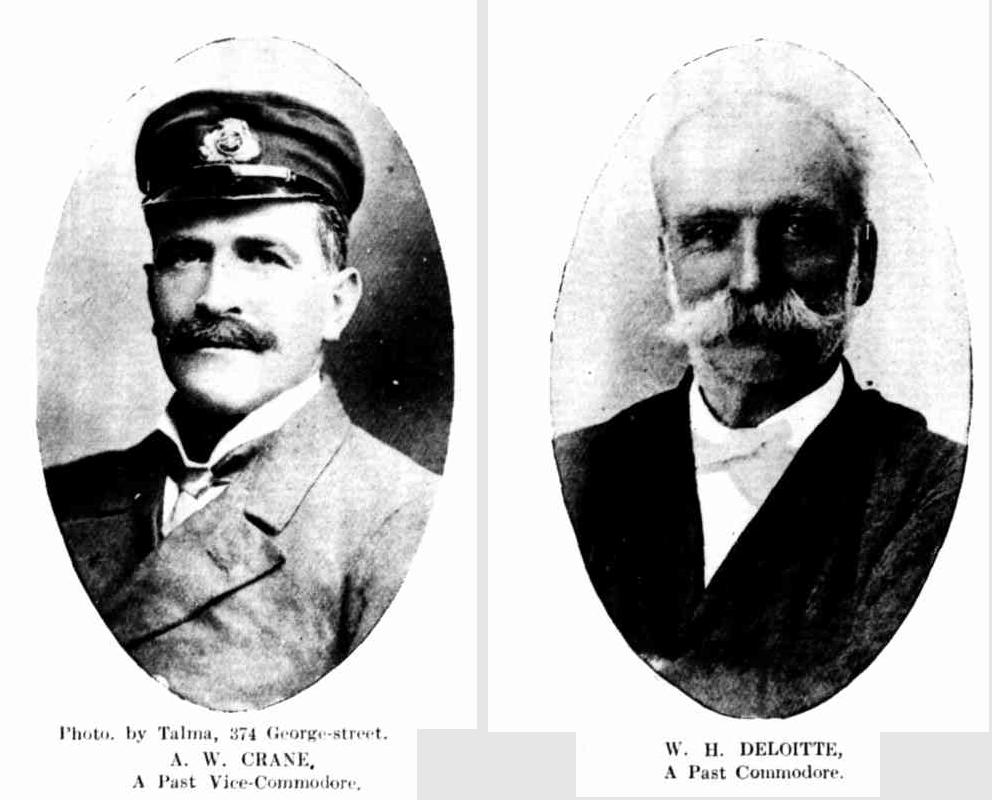
Photo, by Talma, 374 George-street. A. W. CRANE. A Past Vice-Commodore. W. H. DELOITT:, A Past Commodore.
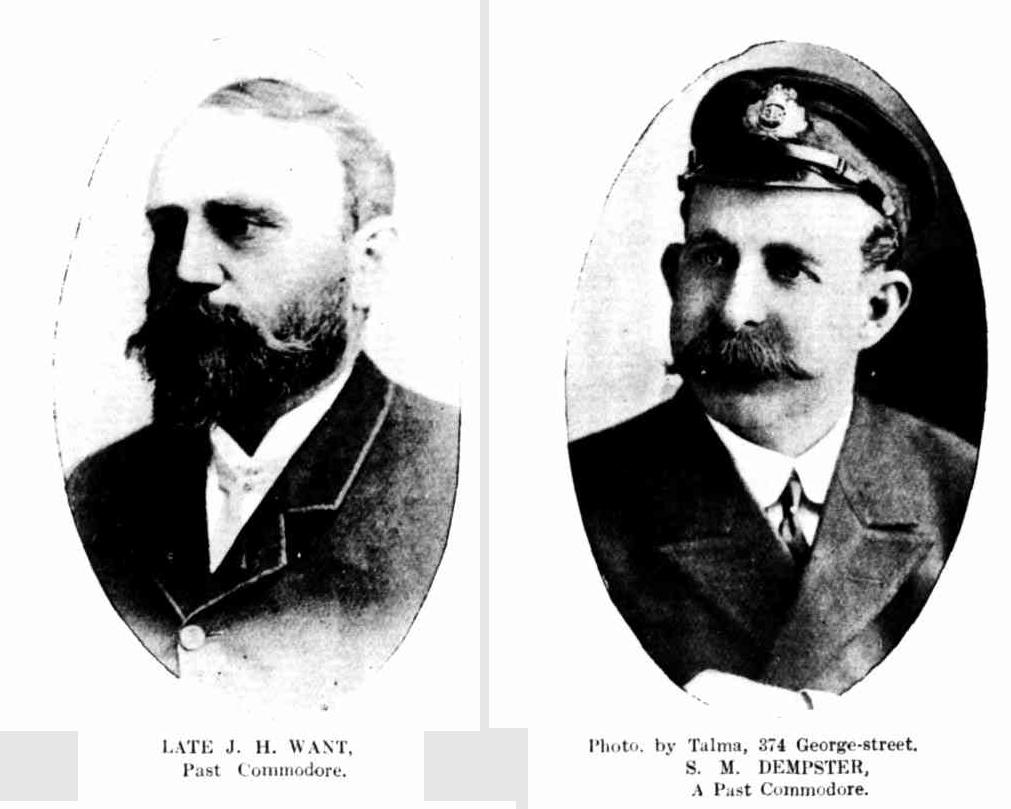
LATE J. H. WANT, Past Commodore. S M Dempster, A Past Commodore
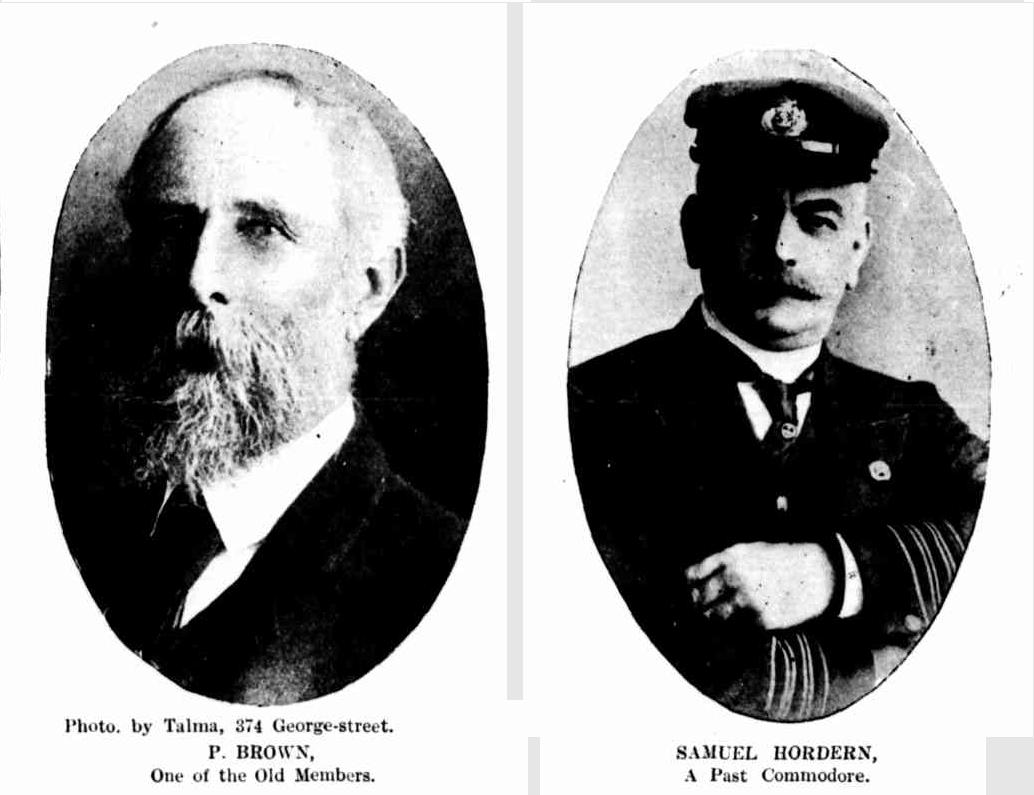
P. BROWN. One of the old Members SAMUEL HORDERN, A Past Commodore.
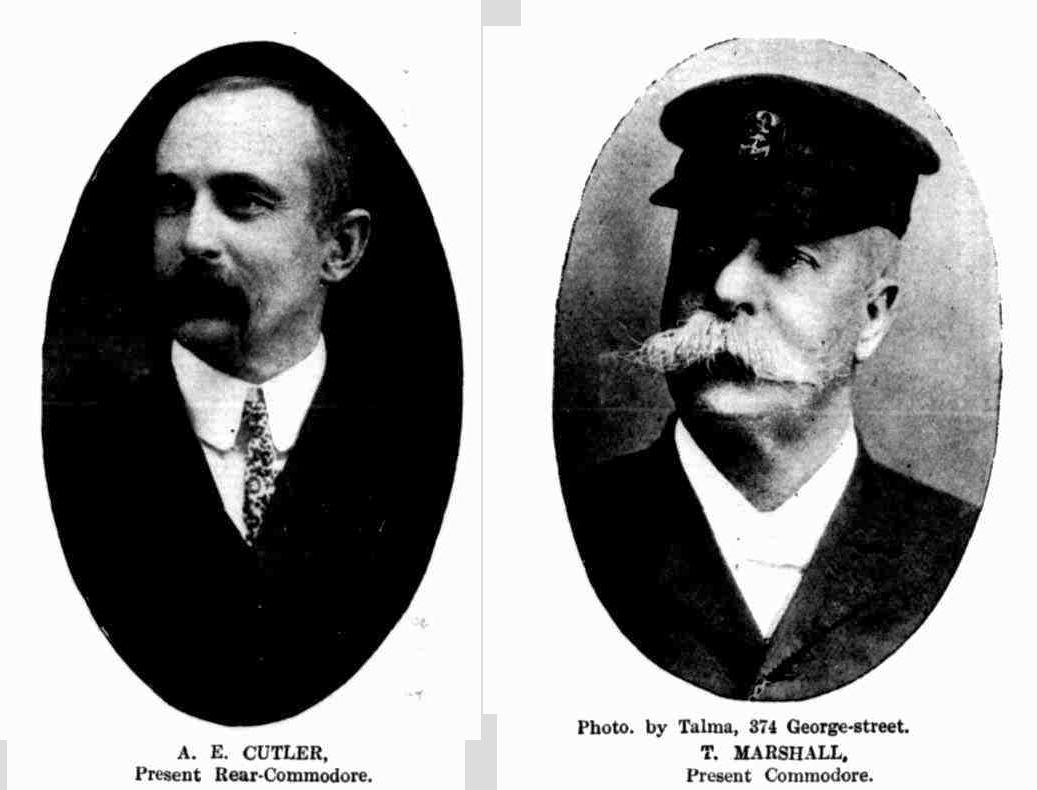
A. E. CUTLER, Present Rear-Commodore. Photo, by Talma, 374 George-street. T. MARSHALL, Present Commodore.
As supplementing the brief notes on. the 'Australian already jotted down, the following extract from a letter written in 1894 to him by the late Mr. George Thornton, another devoted sailorman, may be quoted as showing that the club's first commodore was ahead of his time, not only in Australia, but in England:— 'When I went to England— I think it was in 1864 — you gave me drawings, etc, Of the old Australian. I am not sure whether or not you also gave me a model. I saw Mr. Ratsey and Mr. White, the celebrated yacht builders, at Cowes, and showed the drawings, etc, to them. They seemed to think highly of them. Mr. Ratsey said he would build a five- ton yacht from them. I left them with him. I think he did so, but I never beard with what result. I had also shown them to Hatcher, the great yacht builder of Southampton (of old-fashioned plumb stem Cutter yachts). He, pointing to the raking bow and sternpost of the Australian, ridiculed them.' It will be remembered that in January, 1868, H.R.H. the Duke of Edinburgh visited this colony, and that the arrival of the Galatea in the harbour was made the occasion of many celebrations and much rejoicing. The squadron and the Prince Alfreds joined in welcoming the Royal visitor, and added much to the general effect when their boats formed two lines between which the warship passed on her way up to Farm Cove, and then followed her in line, Mr. Dangar, in the Xarife, leading the squadron's fleet, and Mr. Strickland following In the Australian, in command of ten of the club's boats; all the boats anchored near the Galatea, and took part in the illuminations which were given at night.
The sensational attempt on the Duke's life which was made by O'Farrell in the following March, at the Sailor's Home picnic, at Clontarf, stirred all classes of the community, and we find reference to it in this minute of the club, made during the next ensuing month: — 'That application be made to the Admiralty for permission to fly our present ensign (white with a red cross) and that as a memorial of the visit of H.R.H. the Duke of Edinburgh, and his providential escape from the hands of an assassin, the ensign be known in future as the Prince Alfred ensign.' The application was made, but the Admiralty, in its reply (dated October 21, 1868), did not refer to the white ensign, but slated that there was 'no objection to granting permission for yachts belonging to the Prince Alfred Yacht Club to fly the blue ensign, with a distinguishing mark thereon.' Later on, In a letter dated July 21, 1869, the Admiralty informed the club that 'the blue ensign with a ducal coronet' could be adopted, but asked for information as to the burgee that the members proposed to fly. After some consideration, the club wrote the Lords Commissioners that the burgee decided on was a blue ground, with a broad red cross. And this ensign and burgee are the club's flags of today.
The first race held by the club took place on March 7, 1868, in a light breeze, varying from north-east to east, and a strong flood tide. Nine boats started, being divided into three classes, as follows: — First-class. Irene. Mr. M'Taggart; Challenge, Mr. Andrews; and Australian, Messrs. Graham and Windeyer. Second-class: Galatea, Mr. Gray, and Emma, Mr. Farmer. Third-class: Royal Oak, Mr. Creed; Ixion, Mr. Brown; Dora, Vice-commodore Strickland ; and Ino, Mr. Langley.- Australian led all the way, and finally drifted in at 6 o'clock, half an hour ahead of the next boat, and won in her class. The middle and smallest classes were won by Emma and Ixion respectively. Challenge had bad luck, and managed to get ashore twice.
Commodore Harnett was in charge of the race, on board the Scud, and after the race was over entertained the crews of the competing boats. The matter of club uniform came up for discussion in this year, and it was decided 'that the uniform of the club be blue coat (sac, double-breasted) and vest, white trousers, and straw yachting hat with blue ribbon, a costume which commends itself as being neat and workmanlike, except in the matter of headgear, which must have been, an expensive item, unless prevented from getting adrift by some ingenious form of preventer backstay. The progenitor of the comfortable cap of the present day, no doubt; made its appearance at an early date.
The first annual report, which was read at the annual meeting, held in January, 1869, shows that the club was a healthy youngster, Inasmuch as it appears from the document that during the first 12 months of the club's existence 18 boats had been placed on the register, and the membership almost touched the century. It also appears that the sinews of war were there, the cash balance being on the credit side. The concluding words of t-3 report are worth quoting, and may, even in these latter days, be profitably read, marked, {learnt, and inwardly digested by men of this tor any other club who have the interest of the sport at heart: — ''We beg to impress upon each member of the club the necessity of taking an active interest in its progress. The mere fact of paying the annual subscription or attending one meet a year is not the mode toy which the success of the Prince Alfred Yacht Club will be established. It is necessary that both members and officers should feel that much of its future prosperity depends on their individual efforts.'
Business affairs prevented Mr. Harnett from continuing as commodore, and, at the meeting, Mr. J. W. G. Hanks was elected in his place. In the following year we find some enterprising spirits entertaining ideas of a waterside club-house, with 'a 'slip for hauling up boats. The matter went as far as the appointment of a committee, but no tangible result of their deliberations appears on the records. In this year three club races were sailed. Commodore Hanks's Cup was won by the Australian, with Mr. Andrew's Eva second, and in the ordinary club events Mr. Strickland's Poiriona beat the Australian in the first-class races, and Mr. Walters's Torment annexed first prize among the second-class boats, with Mr. Bradford's Clio second. The two races were sailed in a hard southerly, which seems to have given the crews plenty of exciting work, and the annual report of the year grew enthusiastic as to the efficiency of the hands who brought their boats through. In 1872 the club laid down a definition as to the minimum size of boats eligible for admission to the club, and established the limit to 22 feet on the load-water line, and 7 feet 4 inches beam. The use of tanned sails seems to have been common, for we find a prohibition laid down against the wearing of club colours on boats carrying sails of this kind. Three classes were formed, and separate races were held for each, viz., first-class, 35 feet and over; second-class, over 25 feet and under 36; and third-class, under 25 feet. The system of double handicap — one for windward work, and the other for a lead — was. in use, and might be profitably resuscitated by the handicappers of these days, when big and small yachts are racing together.
Apparently, the ordinary method of handicapping by special officers appointed for the purpose was not always considered satisfactory, for we find that it was not uncommon for each owner to send in a handicap of his own, and the commodore struck an average of the various time allowances given to'each boat. Mr. F. J. Jackson was just as enthusiastic a member of this club as he was of the Royals, and seemed to be flying his racing flag, wit'j its blue ground and yellow bar, wherever there was a race to be sailed. We find him winning the commodore's cup in 1872 in the lone, with Osprey, E. Kirchner, second, and also in the following year taking the same event with Scud, II. Woolnough second.
On the retirement of Mr. Hanks, in 1872, Mr. W. H. Deloitte, the vice-commodore, received his promotion, Mr. T. M. Brown, the owner of Alick, taking second flag. The last-named boat was a remarkably fast little ship of 9 tons, built for Mr. Brown at the old A.S.N. works, and launched in the September of 1871. Her design was almost that of the Australian, but her keel was more conventional, and ended in a true sternposr, and her sides had no 'tumble home.' Her frames were of iron and it is not unlikely that she was one of tie first boats in which the combination of metal and wood was used. Her dimensions, appear extraordinary to the boating man of to-day; they were 52 feet over all, 42 feet from stemhead to steropost. 8 feet beam, and 6 feet draft. She was asked to carry a great spread of canvas, as her mast was 40 feet, topmast 24 feet, boom 38 feet, gaff 28 feet, and bowsprit 14 feet. She won her first race at the Balmain regatta of 1873, when she was entered as an eleven-tonner, and easily beat Ella, Scud, Australian, Iris, and Osterley in a strong south-easter, after giving them time allowance.
The report shows that much interest was taken in these matches, and the doings of the competitors before the race, like the preparations of horses for turf events to-day, were matters of great concern: —
'This was looked forward to as- the event of the day, and great disappointment was felt when It was rumoured that Alick had carried away her rigging on the previous afternoon; but Jack Carrol and his crew went to work with a will, and by daylight next morning had a new set of rigging, and she was seen getting away from her moorings at 10.30.' The Anniversary Day race of the following year must have been an exciting contest, and the report makes good reading. Alick apparently sailed a fine race in a howling nor'nor'easterly, and after sailing over an outside course round a boat off Curl Curl and then round the Flagship and Sow and Pigs, she led over the finishing line nearly six minutes ahead of Pert, J. F. Josephson, nearly, nine minutes ahead of the smart little Nereid, A. Fairfax, and over 12 minutes in front of the Ella, A. Farmer. Although Pert was a much larger boat she received a time allowance of 6* minutes, and so the Alick lost the £50 prize'by about half a minute. The result of the race seems to have caused dissatisfaction among the boating men, and Mr. W. E. King, a keen sailing man, in a letter to the 'Herald' a few days after the event, puts it plainly that the Alick had been badly treated by the handicappers. He stated that it was considered desirable by some to discourage boats like the Alick, on the ground that they were not yachts but racing machines, but when we learn from the totter that the boat which was then looked on by some as a freak had sleeping accommodation for eight men, and deck room for a working crew of twelve, carried more sail and stood up to it better than any boat of her class, the thought arises that it would be interesting to see' what those conservatives would think of some of the modern boats, like, for instance, the Sunbeam or the Janet. Mr. King was more enterprising, however, and came to the conclusion that if the Alick was a racing machine the sooner they left off building yachts and took to machine-building the better. The Alick was afterwards lengthened, and her stern altered, but these changes spoilt her, and she was not the same certain winner afterwards.
Commodore Deloitte owned the Ianthena, a large centreboard boat, stated to be twice the dimensions of the 22-feet waterman's skiff of those days. Off the wind or on a lead she was very fast. In the Anniversary Regatta of 1874 she was called on to give Alick, the only other competitor., six minutes, and she appeared likely to do it. as she had more than hall '-r time in hand at the end of the Jti-rt round, but off Bradley's on the second turn down she carried away her boom, leaving Alick to finish alone. . * (To be Continued.}. Yachting Past and Present. (1907, November 20). The Sydney Mail and New South Wales Advertiser (NSW : 1871 - 1912), p. 1311. Retrieved from http://nla.gov.au/nla.news-article163659078
"Pleasant Water Parties" - HARBOR GLORY - First Race In 1818 MOSQUITO CLUB DAYS
(By Walter E. Bethel)
For ages before the white man came, the aborigines skimmed the surface of Port Jackson in their bark canoes. We can hardly call them yachtsmen, however, for they never I seem to have evolved a sail. In a letter written on March 7, 1791, Elizabeth Macarthur describes a boating excursion to Watson's Bay and speaks of the "pleasant little water parties" that she promised herself. From that day to this Port Jackson has been the playground of Sydney till to-day . it serves the purposes of over a million inhabitants, We talk of the mosquito fleet, but 80 years ago there was an aquatic body with the gorgeous name or the Mosquito Yacht Club. And can we match to-day the old world courtesy of the yachtsmen who remarked to his guests as the craft heeled over: "Gentlemen, we are about to capsize," and added a minute later: "Gentlemen, we have capsized."
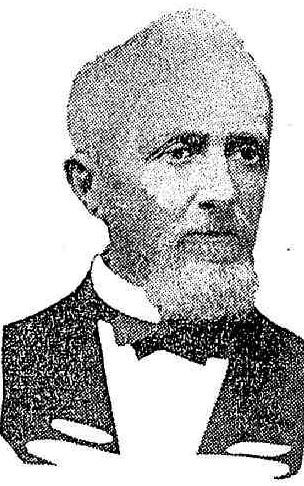 Right: The Prince Alfred's first commodore , Mr, Richard Hayes Harnett, who made yachting history in Sydney when he built his remarkable boat, the Australian.
Right: The Prince Alfred's first commodore , Mr, Richard Hayes Harnett, who made yachting history in Sydney when he built his remarkable boat, the Australian.
Much history has been made on Sydney Harbor since Robert Campbell sailed the first pleasure boat on its waters. She was an open boat about three tons reckoning by yacht measurement — a 3-sticker — with sliding Guhter sails in those days — the approved type being particularly recommended for windward work. The lofty Marconi mast of the present day secures the same advantage — but the Gunter rig, peaked the sail the same way through a topmast, arranged with sliding bands, so that it would readily slide up and down the lower mast. Aquatic sport has naturally flourished in such a setting as Port Jackson. As early as 1818 Captain Piper organised the first boat race, in which his crew defeated those of three ships then in Port, the Guildford. the Minerva and the Batavia.
Room for All
More recently yacht squadrons, sailing clubs and regatta committees have assiduously carried on the task of providing for the competitions that occupy so large a place in the history of our national recreation. Yachting and boating naturally mean more to the people round Port Jackson than to less favored spots. From the pulling skiff to the launch, from the canvas dinghy to the stately yacht, there is room for all. It is a \ popular form of breakaway from life's routine, and the cruise and the camp are among the most effective methods of relief from drudgery. Behind sailing as an organised sport, there is necessarily a background of formality, of etiquette Iargely adapted from naval practice, which is the basis of the regulation of all yacht squadrons; cast iron procedures are laid down for all craft flying the club's burgee. Thus is noticeable not only in the rules that govern racing, but in the features of ceremonial routine, such as the rendezvous, and other special evolutions. The public, viewing the spectacular work of the squadrons, realises little of the inner workings. The records of all yacht clubs must be interesting, but, if they resemble those of the Royal Prince Alfred Yacht Club, they are something more — they are fascinating, because they have been interwoven with a running commentary of the facts bearing on the inauguration, history and progress of the club from its earliest operations.
Yachting Record
This has not even been printed, but it exists as many typewritten sheets, bound up with photographs — a rare record of intimate facts, which could only be produced as a labor of love by one who has been closely associated with the club's doings. When, therefore, Mr. L. C. Waterman, president of the Sydney Yacht Racing Association, an old club member, prepared an historical sketch dealing with the club's affairs, its men and yachts, dating from 1867, he presented his fellow-members with a record that has preserved the sentiment of past years — the personalities of former commodores, and the achievements of yachts whose names are not familiar to the present generation. Mr. Waterman acknowledges the help of such old-time yachtsmen as Mr. F. J. Jackson and Mr, F. S. Adams, with whom and with the secretary, Mr. Buchanan, he has prepared his memento. This article owes much to Mr. Waterman's work. It can give only the outlines of the 68 years of the club's existence. The club has been controlled by 16 commodores: —
Richard Harnett 1868 to 1869
J. W. G. Hanks 1869 to 1872
W. H. Deloitte 1872 to 1877
J. H. Want 1877 to 1882
Dr. Milford 1882 to 1888
W. M. Maclardy .. .. 1888 to 1891
H. S. Harden .. - 1891 to 1892
Samuel Hordern .. .. 1892 to 1905
S. M. Dempster .. .. 1906 to 1907
T. Marshall 1907 to 1908
N. H. Murray 1909 to 1914
W. M. Marks 1914 to 1921
P. Ross .. 1921 to 1922
A. Wilson 1922 to 1923
Sir Dudley de Chair . . 1923 to 1927
Sir Philip Game .. .. 1927 to 1935
Came the Mosquitoes
Before any of the yacht squadrons came the Mosquito Yacht Club. According to a clipping in the Prince Alfred Yacht Club records, the office bearers of this club were: — President, Robert Campbell, M.L.A.; treasurer, Peter Curtis; lion, secretary, W. J. Johnston; auditors, Messrs. J. McDonnell and G. Grime; umpire, G. Driver; committee, Henry Dodds (chairman), J. Bell, W. Nash. J. Pasttley, W. Smith, W. Turner, G. Driver, A clause in the rules limited the length of the club's boats to 13 feet on the keel, measured along the gar-board seam. It was apparent that the Mosquito Club was the first organisation of its kind, and we are told that when the Dunbar crashed at the Gap, in 1857, club members sailed their boats down to the Heads and helped to pick up the bodies of the victims.
The Prince Alfred Yacht Club records show that on Tuesday, October 15, 1867, the following advertisement appeared: — "Mosquito Yacht Club. — Boat owners wishing to join, please meet at McGrath's at 8 o'clock to-night."
The meeting was duly held at Punch and McGrath's Hotel, In King-street.- T. Strickland, a well-known yachtsman, was in the chair. Those present were L. Windeyer, J. Graham, Grey, J. R. Walters, J. Brown, P. J. Clark, B. C. Boake, W. E. Langley, Lomas King and Cox.
New Name
A motion by Messrs. Langley and Graham was carried, that the new club formed that night be designated "The Prince Alfred Yacht Club." Those present, therefore, may be regarded as the founders of the present club. The Royal Prince Alfred Yacht Club thus grew out of the Mosquito Club. A general meeting of the new club was held on October 21, 1867. Colors were adopted and rules drawn up. Mr. T. Strickland, the vice-commodore, acted as commodore pro tern, until Mr. Richard Harnett was appointed in 1868. W. Reading seems to have been the first honorary secretary. The club had its first opening day on December 7, 1867, when the club colors were worn for the first time. Application had been made to the Admiralty for permission to fly the club's ensign, and permission was received to fly the blue ensign with white ducal coronet in the fly. The burgee was then approved as follows: — Blue with red cross, the coronet in the ensign to be red. When the right to prefix "Royal" was conferred on the club in 1911, the burgee was altered by the addition of a crown in the upper canton.
After the first year it became necessary to define a uniform for the club, and this took shape as follows:—
Straw Hats
Blue double-breasted coat and vest, white trousers and (ye gods) straw hats, adorned with blue ribbon. How much these hats were worn in the long ago, is not stated, but apparently not for long, judging by a comment in the records, that if the use of the straw hat was to extend to the forrard hands, it would prove a prolific cause of profanity, (Hid that after a Saturday's blow, there would be a goodly supply of "straws" floating in the Harbor on Sunday.
At the first opening day, the following yachts took part: Australian, Gitana, Daisy, Ixion, Emma, Lurline, Royal Oak, Irene, Galatea, Dora and Spray. Mr. Richard Harnett's appointment as the first Commodore was announced before the close of the year and he took up his duties from 1868. At the end of 1868, good progress was reported. Mr. Harnett could not see his way to continue the Commodoreship beyond 1868. Mr. J. W. G. Hanks was appointed and carried on till 1872. The first year 1868 showed 18 yachts on the list and nearly 100 members. During Mr. Hanks's rule it was decided that all yachts should be rated according to tonnage calculated on tills formula: —
Tonnage Formula
The length from the outside stem head to the outside of stern post, multiplied by the extreme beam, and divided by '94, the quotient to be considered the tonnage. This was the Royal Thames's Yacht Club measurement. In 1870 the purchase of a water frontage for slip and club house was discussed but nothing was done. Commodore Hanks was presented with a silver salver. Vice-Commodore Strickland's yacht, the Pomona, carried off the first prize for first-class yachts, Mr. Graham's Australian being second.
In 1872 the following classification of yachts was agreed upon:— First class: 35 feet and over. Second class: Over 25 feet and under 35.Third Third class: Under 25 feet. A novel handicap system was in force in those days. Each yacht-owner entered for a race sent in a handicap for all yachts, except his own, and the commodore struck an average. Two handicaps were made, one for leading and one for working to windward. The Commodore's Cup for 1872 was won by that fine yachtsman, Mr. F. J. Jackson, in the Ione, with Osprey second and Scud third. Mr. Jackson gained most fame through his fast 10-tonner, the Violet, which showed a clear pair of heels to most in Its class. He was commodore from 1878 to 1882.
Waterside Quarters
Mr. Hanks resigned at the end of 1872, and was followed by Mr. W. H. Deloitte, who remained in the position till 1877. Then came Mr. J. W. Want's period (Jack Want, as he was to everybody). He held the post till 1882. The club nearly secured waterside quarters In 1878. Mr. Want pushed the question. Mr. Harnett offered land in Middle Harbor on a point near the Quaker's Hat, just round the corner from Pearl Bay, but funds were not available, and the matter was dropped again. In 1880 Mr. J. Henniker Heaton, of penny postage fame, then connected with the "Town and Country Journal," gave, on behalf of the "Town and Country Journal," a cup for club competition. Mr. Henniker Heaton afterwards left for England and became a leading politician, being finally created a baronet. The cup was won by Mr. Want's Guineviere. Dr. Milford succeeded Mr. Want in 1882, and held office most successfully till 1888. Dr. Milford was an enthusiastic and practical yachtsman, who had several fine boats built, and personally handled them all. These were the Doris (5-ton), the Sao (6-ton), and the Isea. Dr. Milford took the Doris to Melbourne in 1883 and carried off the first prize in the third section. When congratulated by the club on his success, he remarked that he had grown tired of sailing round the buoy at Manly and back to the red one at Fort Macquarie. On the Way down to Melbourne the Doris broke the main boom off Twofold Bay. She put in to that port, and the crew improvised a boom from a sapling, and sailed on.
Curious Finishes
Curious finishes attended some of the races. On November 24, 1883, the first race of the season was won by Waitangi (Milson), 1st with Sirocco (Knox) 2nd, and Australian, H. Stevens 3rd. The second contest followed on February 9, 1884, and the same three yachts filled the same places. A protest was raised against the Waitangi, and she was disqualified for an Infringement of rule 4 of the sailing directions, as having been commanded by a non-member of the club during the race. The prize went to Mr. Knox of the Sirocco, but he declined to take advantage of the position created by the Waitangi's disqualification, and the race was re-sailed. This time the Australian (the Lemonade Bottle, as she was called) came in a winner.
Under Dr. Milford's Commodore-ship, outside races to Broken Bay, and to a mark off Wollongong, became more frequent. On December 4, 1886, the following competed in the race to Broken Bay and back: — The Sirocco, 10 tons, E, W. Knox, scratch; Guineviere, 10 tons, J. H. Want, 7min.; Sao, 6 tons, Dr. Milford, 20min.; Assegai, 6 tons, G. F. Murmin, 20min.; Carina, 9 tons, Captain Gascoigne, 25min, Captain Gascoigne was A.D.C. to the Governor, Lord Carrington, and the Gascoigne Cup, now periodically raced for, has kept his memory green. Dr. Milford won with the Sao, Mr. Want's Guineviere being second.
The Wollongong race was won by the Assegai (G. F. Murnin); only four started. The winner was the only boat timed to finish.
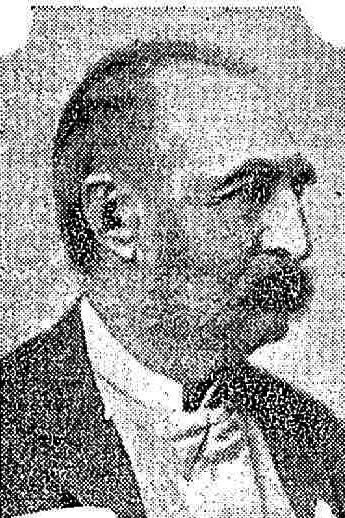 The doctor resigned from the commodore-ship in 1888. No commodore has a better record for personal and practical work. He handled four yachts in his time. The Doris, the Sao and the Isea were built to his order. He also ran the Waitangi for a season.
The doctor resigned from the commodore-ship in 1888. No commodore has a better record for personal and practical work. He handled four yachts in his time. The Doris, the Sao and the Isea were built to his order. He also ran the Waitangi for a season.
Many stories are told of the doctor, whose courtesy was invariable. He never dropped it under stress. While at the tiller of his son's 16-foot racing dinghy, the Young Jack, and getting into trouble, he said hurriedly, "Gentlemen, we are about to capsize," adding apologetically as the Young Jack turned on her side and filled up, "Gentlemen, we have capsized."
The Sayonara seems to be the oldest yacht of the Royal Prince Alfred Yacht Club in commission. She is owned by Mr. Paul Ross, Commodore of the Royal Sydney Yacht Squadron. Fife designed, she was built in Adelaide in 1897 by Mr. A. McFarlane.
Scanning the lists of the Royal Prince Alfred Yacht Club for the oldest member, I find that my old friend, "Skip" Kellerman, holds that honor. He joined with the Elf, 25 tons, in 1890. The Elf was stolen from Vaucluse Bay some years ago, taken outside the Heads, and wrecked on the rocks off Dee Why. He also owned the Tasma at the same time — and still has her in commission. We sailed a canvas dinghy 57 years ago, but that does not count. Another article is required to cover even briefly the full period of the Royal Prince Alfred Yacht Club's operations. The work of the rest of the commodores, including the late Samuel Hordern, who held office for several years, call for review. The story of the R.P.A. Yacht Club will be concluded in "The Sun" of Saturday, February 23.
Right: Dr, Frederick Milford, a well-remembered yachting enthusiast of the '80', and '90 's, formerly one of Sydney's leading medical practitioners, of whom a highly diverting story is related by Mr. Bethel to-day. "Pleasant Water Parties" (1935, February 16). The Sun (Sydney, NSW : 1910 - 1954), p. 7 (LAST RACE). Retrieved from http://nla.gov.au/nla.news-article230269631
EARLY MOSMAN.
Picturesque Period.
WORK OF RICHARD HAYES HARNETT.
Mr. R. H. Harnett, of Chatswood, was with his father, the late Richard Hayes Harnett, on the day when the Duke of Edinburgh was shot at Clontarf. The incident, he said yesterday, caused the wildest excitement, and it was only by a desperate effort that the would-be assassin was saved from being hanged to the nearest tree.
This, however, was but one event In the remarkable career of the "Showman of the Shore," as Richard Hayes Harnett was affectionately known in Sydney in the days when Mosman was mostly bush. Recalling that picturesque period, Mr. Harnett, "Junior," as he likes to be styled, notwithstanding his 88 years, said that nearly half the land in the district had once been owned by his father, who had been a man of considerable force of character, imbued with progressive ideas.
PIONEERING ENTERPRISE.
On his arrival in Sydney in the fifties (he originally came to Australia from Cork in 1840 by the ship China), Richard Hayes Har-nett opened up business as a commercial broker. Inheriting, some years later, a very large fortune, he bought in 1870 some 450 acres of land at Mosman and Cremorne, and more than 1000 acres at Longueville and Chatswood.
The Mosman and Neutral Bay wharves were built by him in 1872, and he established the Mosman and Neutral Bay ferry at his own expense. The first boat was the Aberlona, and the second, Golden Rose.
About 1877, again drawing from his own pocket, he started the first line of buses from Milson's Point to Mosman, Chatswood, Longue-ville, Pymble, and Middle Head, thus pioneering the way for the North Shore railway. He was even able to Induce the Government of the day to make a trial survey for a harbour bridge.
In addition to giving free land for churches and parks, and building the first Public school at Mosman, he erected a beautiful mansion of 22 rooms, called Buena Vista, at the junction of Bradley's Head Road, 'Middle Head Road, and Military Road. Parts of the old house may still be seen behind the present Buena Visa Hotel.
A NOTABLE YACHT.
"My father," continued Mr. Harnett, "made yachting history with his remarkable boat, Australian, whose lines were adapted from a fish.
"He caught a mackerel in Woolloomooloo Bay, and, to obtain the lines that he wanted for his yacht, took the fish to his house in Victoria Street. Opening its mouth, he cut it in two parts, and proceeded to trace its lines on paper. From the design thus obtained he built the yacht, which won the race in the Regatta of 1863.
"He was appointed first commodore of the Prince Alfred Yacht Club in 1868."
A LONG ROW.
When the Harnett family first went to live on the North Shore, in 1860, there were no more than a thousand dwellings there, and all these were without water, gas, and sewerage. For water, the residents depended either upon the rainwater flow from the roofs or on creeks. Fruit drays used to come down early in the morning to a spot where the Pacific Highway is now, and often they were compelled to wait until evening to cross the water. That was the time when the Harnetts, father and son, thought nothing of rowing to Circular Quay, though there were occasions when they were given "a friendly tow." It was not to be wondered at. therefore, that when a ferry service was eventually instituted, passengers did not cavil at paying a fare of one shilling return. Even at that figure the venture was unprofitable.
Mr. Harnett mentioned that the cost of constructing roads at Mosman, between 1870 and 1882, devolved upon his father, except in the case of Military Road. Indeed, some £40.000 had come out of the estate for these and other public works, during that halcyon period, when the property was the largest in Mosman in single private ownership.
Despite his influence and wealth, however, Richard Hayes Harnett had no taste for public life. He was content to put Mosman "on the map" and to live up to his reputation as "The Showman of the Shore." EARLY MOSMAN. (1937, September 21). The Sydney Morning Herald (NSW : 1842 - 1954), p. 10. Retrieved from http://nla.gov.au/nla.news-article17407707
His second wife Charlotte passed away a few years after him:
HARNETT.—June 17, at Turramurra, Charlotte, widow of Richard Hayes Harnett, of Mosman. Family Notices (1906, June 23). The Mosman Mail (NSW : 1898 - 1906), p. 2. Retrieved from http://nla.gov.au/nla.news-article247014444
Death of Mrs. Harnett.
It was with sincere regret; that the news of Mrs. Harnett's death was received at; Mosman, in fact m the whole of the North Shore district. It is a good many years since she first came to live at the " Nest,' Mosman, and she has been identified with the rise of Mosman in its earlier days.
Apart from her being the widow of our greatly loved pioneer (Mr. B, Harnett), she was esteemed for herself by many friends. A truly clever woman, a writer of power and culture, an artist of talent, a conversationalist of brilliance, a hostess to meet again, withal unassuming and diffident in her opinion of herself. For many years a sufferer, we cannot but feel that she has entered into her desired rest. Mrs. Harnett had just returned from a visit to her married daughter in New Zealand and was staying at Wahroonga, so passed away among her own people. She was buried at that peaceful God's acre of Sr. Thomas, and only her own people were present as the Rev. K. C. Beck read the solemn words at the grave that dwelt on "" Life Everlasting." Death of Mrs. Harnett. (1906, June 23). Mosman, Neutral and Middle Harbour Resident (NSW : 1904 - 1907, 1919), p. 6. Retrieved from http://nla.gov.au/nla.news-article252191052
The son named after him, interviewed in the article above, and the first Mayor of Mosman, passed away soon after that September 1937 publication and just a few weeks after another brother. Richard Harnett the younger was born at O'Connell street in Sydney in 1850:
HARNETT. — January 5, 1938, at Chatswood, Richard Hayes, junior, son of Richard Hayes Harnett, aged 87 years.
HARNETT. — December 13, 1937, Rolla Alma, son of Richard Hayes Harnett, aged 80 years. Privately interred. Family Notices (1938, January 7). The Sydney Morning Herald (NSW : 1842 - 1954), p. 10. Retrieved from http://nla.gov.au/nla.news-article17421268
MR. R. H. HARNETT.
Mr Richard Hayes Harnett, who died at Chatswood last week was a member of one of the pioneer families of the North Shore. His father, who came to Australia in 1840 and made his residence at Blues Point a few years later, took up land at Mosman in 1871.
Mr Richard H. Harnett, the son, was the first Mayor of Mosman, and at a later date was Mayor of Lane Cove. His father was the second Mayor of Willoughby. He was in business in Sydney for many years as a mercantile broker, and was a member of the Royal Exchange. A bachelor, he was 87 years of age.
The funeral took place at the Northern Suburbs Cemetery, where the Rev R. C. M. Long officiated. MR. R. H. HARNETT. (1938, January 10). The Sydney Morning Herald (NSW : 1842 - 1954), p. 6. Retrieved from http://nla.gov.au/nla.news-article17437641
Of course to those of Pittwater we remember him best for standing up to be the first Commodore of the Prince Alfred Yacht Club and giving a chance to all those other classes of yachts, and all the sailing that came thereby;
SYDNEY REGATTA TRADITIONS
Man Who Revolutionised Racing Yachts
By Walter E. Bethel
This month's Anniversary Regatta on Sydney Harbor will be the 105th. Each of those regattas, dating from over a century ago, typifies the love of maritime sports which has made for British sea-power— a power that is still Britain's glory.
The first boating club in Australia was started in 1836, Burton-Bradley, of a well-known legal family, as commodore of the club, flew his flag at the masthead of the Shallow. Other boats in this historic club were the famous Sophia, owned by James Milson, a name that runs through sailing history from its earliest days. There was also the Ariel, belonging to Mr. John Ritchie, the Wave, skippered by Mr. Elyard, and a nameless boat, owned by George McPherson. Out of this ancient club developed the Anniversary Regatta, which was held for the first time on January 26. 1837.
From the very first the regatta caught on as a national feature, and old-time prints show the various headlands of the Harbor given up to crowds of spectators, who picked their spots, and made a picnic day of it. There were beer booths, and Punch and Judy shows filled the intervals between the races. There has never been any. difficulty in maintaining strong committees for this aquatic event. There are men to-day on this historic committee. who take the place of their forbears, and so long as the Spains, the Milsons. the Creaghs. and the Woodgates are available, the control of this notable regatta will never weaken.
NEW DESIGN
As men got together in their sailing clubs, new ideas manifested themselves. and in 1848 a change was made in yachting construction that proved to be a world-wide achievement. It emanated from an Australian yachtsman's mind, and found shape in Dan Sheeley's boat-building sheds, on the eastern side of Woolloomooloo Bay. In that year the late Richard Hayes Harnett owned a yacht called the Madge Wildfire, the winner of the third-class yacht race of 1848. Harnett proved himself to be the possessor of a most thoughtful mind in yachting science. The story is well told in the columns of the now defunct aquatic publication known as 'The Anchor.' Harnett designed, and had built to his precise order, the famous yacht, Australian, a vessel designed to win great successes and alter the fundamental rule of hull construction, long before English yachting circles took a hand.
'The Anchor' presents the case thus: —
SPEED LINES
"Mr. Harnett showed his original mind and discarded all tradition as to the best form of a yacht's hull. His conception was that, if you want a vessel to go through the water fast, you had better reduce the resistance the water offers to her progress and cut down friction as much as possible. It Is reported that at this point he called to mind an axiom the shortest distance between any two points — and so in drawing his sections he shut his eyes to the shape of the vessels around him, and instead of their full, round sections, he ran his straight edge from keel to water-line, and made all his transverse sections two sides of a triangle.
'Then, as to longitudinal design, he got right away from the straight keel with the deep gripping forefoot and swept the arc of a circle for the keel of tills remarkable vessel. He put a false keel on her, running from nothing forward in a sweet curve, and cut It off straight, and down about a third of her length, from the stern to take the rudder.
'Then he put her mast along the same distance from her bow and lo! there was a vessel many years ahead of her time in design, and one of the fastest racing machines that sailed in Sydney Harbor for many a year.'
But the Royal Sydney Yacht Club did not exactly appreciate the situation. They were puzzled and a bit annoyed at this radical departure from accepted measurements. Under the old Thames rule, a difficulty confronted them, so they got out of it. for the time being, by deciding that the length of Harnett's new craft was to be taken from the hole in the deck, where the rudder head came through —as already stated, about one-third of her length from the stern. This form of measurement brought her out at under five tons, which deterred her from racing, as nothing under that tonnage was eligible.
Harnett was not the man to take this treatment lying down. He fostered a revolt, and it is thought that the dissatisfaction thus created led to the formation of the Prince Alfred Yacht Club, a body embracing small yachts that were Ineligible to join the already existing club. In this way the Australian found scope for her powers, and remarkable results were achieved that must have been gratifying to Harnett.
Among the most devoted believers in Harnett's prescience was the late Armand Kellernan, who at the time of his death, a few months ago, was about the oldest member of the Prince Alfred Yacht Club. He took up the cudgels for Harnett in a letter addressed to the editor of the 'Yachting Monthly.' London. Mr. Kellernan's letter, dater January 16. 1939. read:—
'Attached please find photograph and lines of the yacht Australian, built In Sydney In 1858, to my mind the epoch-making yacht -of the world. She was designed by Mr. Richard H. Harnett and built under his supervision by Dan Sheehy at Woolloomoolloo: her size was 36ft. O.A.. 30ft. W.L., beam 6ft. draught about 5ft. Cutter-rigged.
'She had an unbeaten record in her own class, and won many races classed as a seven tonnner against much bigger yachts. Her most successful racing was done under the ownership and skippership of Mr. Harry Stevens.
These particulars seem to point to the fact that the Australian, built in 1858. had all the features (Improved) of the Jullanar, built 18 years after, so that many of the bouquets thrown to Mr. E. H. Bentall should have gone to Mr. Harnett.'
Mr. Kellernan, though of a retiring disposition, was known as a sound yachtsman and one deeply versed in the technique of yachting detail.
SYDNEY REGATTA TRADITIONS (1941, January 4). The Newcastle Sun (NSW : 1918 - 1954), p. 4. Retrieved April 23, 2019, from http://nla.gov.au/nla.news-article167430693
The above does reflect some of the reasons given for the formation of the RPAYC, however Harnett's 'Australian' was also a founding yacht for the RSYS:
ROYAL SYDNEY YACHT SQUADRON'S JUBILEE.
FIFTY YEARS AGO— on July 8, 1812— the Royal Sydney Yacht Squadron was founded, largely as the result of the energy of Mr. William Walker, a Sydney mer chant. Yachting had then been followed by a few enthusiasts for about 30 years. Small clubs had been formed in 1836 and 1856, but little attempt was really made to organise the sport till the early sixties. The first meeting to discuss a squadron was held at the Ex change Corner, Bridge-street, and was at tended by 19 gentlemen, each of whom signed the Magna Charta upon which the squadron — originally called the Australian Yacht Squadron — was founded. Most of the famous 19 have died, but their names are revered. One of the most treasured possessions of the squadron to day is a document — signed by each of the 19 — which hangs on the wall of the clubhouse at Kirribilli.
It is the constitution of the club, and the names if bears are: —
Yacht
James Milson junr,...........Era.
William Walker.................Chance.
Thomas P. Roxburgh.......Eclipse
Thomas T. Rowntress......Annie Ogle
Sydney C. Burt................Scud.
Staunton Spain...............Mischief
L. J. Josephson...............Ida
Robert Garrett................Daisy
Charles Parbury.............Why Not
Frederick J. Jackson......Gitana
Henry Threlkeld.............Irene
R. Harnett......................Australian
A. W. H. Pockley............Mazeppa
Henry C. Dangar........... Peri
H. Stuart Russell............Old Tom
J. D. McLean..................Mischief
J. W. Brooks...................Mischief
James Freeman..............Eclipse
H. Milford........................Eclipse
AT a late meeting the rules of the squadron were drawn up, and the first office-bear ers appointed, namely :— Commodore, William Walker; vice-commodore, James Milson, junr ; hon. treasurer. Henry C. Dangar: hon, secre tary, George H. Howell: committee, Captain Pockley and .Messrs. Roxburgh, Parbury, Spain, M'Lean and Burt.
THE first cruise of the club took place, on October 18, 1862, when 12 boats sailed from Farm Cove to Manly Beach, and the first race on the New Year's Day following. For the latter half-a -dozen boats entered — Peri, Scud, Ida, Why Not, Old Tom, and Gitana— and the firstnamed won easily.
An important event in the history of the squadron was the receipt of a letter from the Colonial Office, dated June 27, 1863, enclosing a copy of a despatch received by the Governor of the colony from the Duke of Newcastle, intimating that his Royal Highness the Prince of Wales had 'signified his willingness to become the patron of the squadron,' under the designation of the Royal Sydney Yacht. Squadron, and that, the Lords Commissioners of the Admiralty had authorised by warrant the use by the squadron of the Blue Ensign of her Majesty's fleet, without any distinguishing mark upon it. This warrant, which was dated April 25. 1863, was subsequently replaced by a fresh warrant, dated May 15, 1864. The squadron thus acquired and still retains the right to exercise the same privileges as are possessed by the Royal yacht clubs of the United Kingdom.
At the next meeting of the squadron it was resolved that the club burgee should be 'blue with a white cross, and a crown in 'the upper corner;' and so it remains to-day. Since those days great advances have been made in the construction of yachts. The old deep-keeler has been almost entirely replaced by the modern over hanging bow, and the old system of ballasting by sand, gravel, stone, or metal has been superseded by outside ballast. Among the first to use the outside lead was Mr. A. G. Milson, who altered the ballasting of the lone in 1876.
IN the course of its career the squadron has had many ups and downs; it has had times of great progress and times of depression, but it has managed to keep its sails unfurled throughout. In the seventies, for instance, we find Mr. Dangar, who was then commodore of the squadron, referring to the 'depression in the colony' and lamenting the general 'lack of interest in yachting matters:' but in the eight ies, under the direction, first, of Commodore Milson, then of Commodore Fairfax, the squadron made great progress, and yachting became recognised as a 'national game.''
In the early days of the squadron, club racing within the harbour was the main objective: but trips to sea soon became popular. Then, with the growth of clubs in the other States, interstate racing became the great incentive, and in 1882 the Doris carried the burgee of the squadron to Melbourne, followed by the Era and Volunteer in 1888, the Rawhiti in 1897, the Thelma in 1909, and the Culwulla III. two years ago, when the Sayonara Cup was won from the Royal Yacht Club of Victoria. The Culwulla III. has also made successful cruises to Tasmania and Brisbane. Smaller boats than these have also made voyages outside the Heads— as far as Port Stephens and Jervis Bay. AT present the squadron boasts a member ship of over 280 and never in its fifty years of existence has its future looked bright er than at present. New enthusiasts are coming forward every season, and most of the older yachtsmen stand by the club, notably such members as Sir James R. Fairfax and Mr. A. G. Milson. On Monday night the members of the squadron foregathered at the Hotel Australia to celebrate the fiftieth anniversary of the founding of the squadron.
VIEW OF THE CLUB HOUSE AT KIRRIBILLI.
ROYAL SYDNEY YACHT SQUHDRON'S JUBILEE. (1912, July 10). Sydney Mail (NSW : 1912 - 1938), p. 7. Retrieved from http://nla.gov.au/nla.news-article158478593
The Yacht Australian.
Never since the first yacht race held on the waters of Port Jackson has there been a boat better known or more respected, if such a term may be applied, than the yacht Australian. The peculiar build of the vessel has made her an object of observation to all, and many who have never trod a deck speak of her with familiarity; and her performances are at all times most carefully watched.
She may fitly be chosen as an Australian representative boat, for not only bearing an appropriate title to hold such a position, she was also built here, Mr. R. Harnett, sen., being the designer and Mr. D. Sheehy the builder, who launched her some 25 years ago. The engraving will give those who have not seen the Australian ,"high and dry" a very true idea of her shape, while the following measurements will doubtless be useful; Length overall, 37ft; beam, 4ft, depth from deck to keel (maximum), 7ft 6in, length on waterline, 31ft 6in.
A straight line drawn from the stemhead to the after end of the leaden keel measures 26ft, and, contrary to the present fashion, she has only a small quantity of lead (about two tons) outside, the larger amount being in the shape of ballast. This of course, according to latest discoveries, does not add to her stability in heavy weather, but nevertheless she has proved so good in all kinds of breezes that no one can doubt her weatherly qualities. One matter which is at present but indefinitely decided is her measurement, as, having no sternpost, her size cannot be arrived at in a manner fair to all, according to the orthodox style, but next season we believe it is the intention of her owner to have official advice on the subject, as lately, when remeasured by one of the clubs, it was decided to make her rank at a seven-tonner, which in every probability is a couple of tons too many. Her rigging measurements are: Length of mast, deck to hounds, 26ft ; topmast hounds to truck, 18ft, boom, 31ft 6in, gaff, 20ft 6in; bowsprit length, 10ft 6in (17ft outboard). The working sails generally used by her are :-Mainsail : foot 81ft, head 20ft, luff 19ft 6in, after leach 33ft 6in. Topsail : tack to head 3Gft, after leach 22ft, foot 23ft. Jib : luff 35ft, after leach 24ft, foot 16ft 6in. Foresail: luff 21ft 6in, after leach 18ft 6in, foot 16ift 6in. Her sail carrying capacities are too well known to need comment, and, if pressed in a race, she appears with an unequalled spread of canvas, viz., spinnaker (luff 46ft, leach 36ft, and foot 35ft), while her squaresail measures 30ft by 58ft, with raffle 10ft by 17ft, as well as an enormous ringtail. While speaking of her sails, it is only fair to mention that the fact of her using so much canvas when "off a wind" is in a great manner due to the unequalled smartness of her "for'ard hands," composed chiefly of the sons of a late respected boat-builder; and the lowering and hoisting of her various sails during regattas, and races of the past season, has been the cause of eliciting much applause from all sailing men.
It is unnecessary to give an account of all her performances during the past quarter of a century, but the following details will suffice to show her merits. Since Mr. H. Stevens has purchased her she has competed in seven public races with the following results:-Won Balmain Regatta, allowing the Dorie five minutes. Got third place in P. A. Y. Club race; Waitangi and Sirocco first and second. Secured second place at Anniversary Regatta, when she allowed the Sao two minutes; in February 16 ran third to Waitangi and Sirocco in P.A.Y. Club race. Won the third-class yacht race of the P.A.Y. Club on February 23, allowing the Sao 1 min., Doris 9min., and Ione 4min. On Saturday, March 22, she again secured first prize, allowing the Sao 3min, Ione 4min, and Doris 12min, in a P.A.Y. Club race. Woolloomooloo Bay Regatta saw her defeated by the Sao (with 2min) by 3sec, although some persons taking the time made the Australian an easy winner. This makes her winner of three races, second in two, and third in two, which cannot but be deemed a good average, considering her principal rival is fitted with every improvement, including a Lapthorne suit of sails, and was designed by the premier of naval architects.
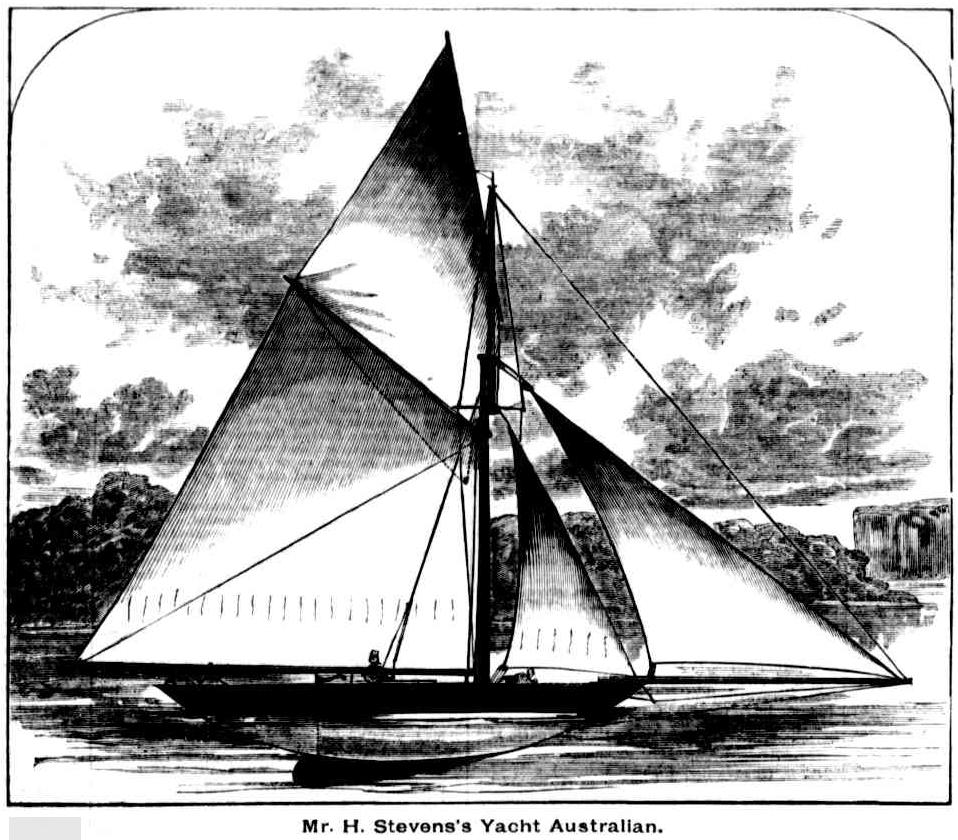
Mr. H. Stevens's Yacht Australian.
The Yacht Australian. (1884, June 14).Australian Town and Country Journal (Sydney, NSW : 1870 - 1907), p. 19. Retrieved from http://nla.gov.au/nla.news-article71013385
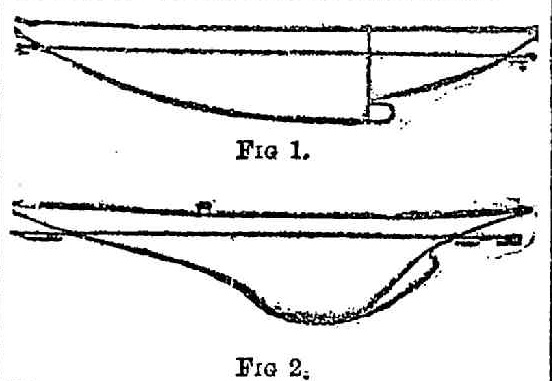
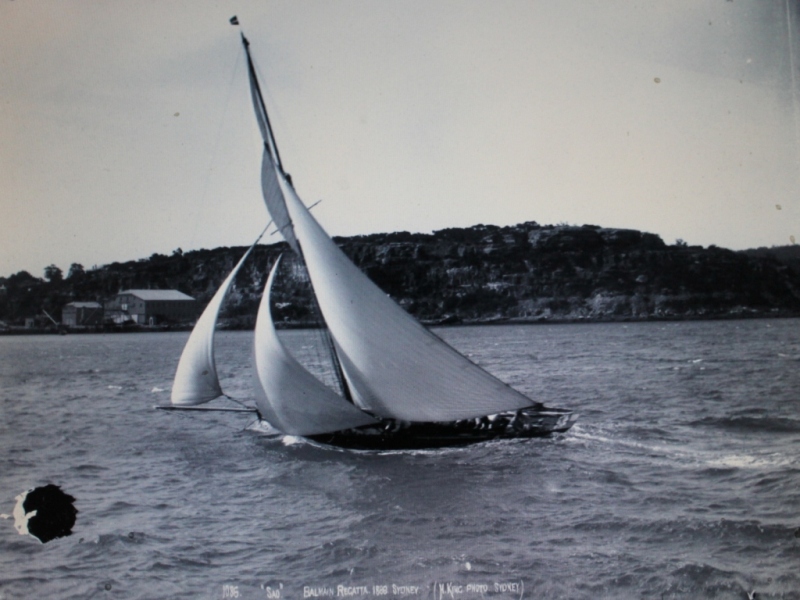
Sao sailing in the 1889 Balmain Regatta by Henry King, courtesy Powerhouse Museum Tyrell Collection.
.jpg?timestamp=1556012403000)
SYDNEY YACHTING MEMORIES
THE FAMOUS 'AUSTRALIAN' OF GLORIOUS MEMORY
By H. C. PACKHAM.
And so this foremost and starter of many great things in Australian sailing, and named for his home, was gone. However, we also remember this founder of the R.P.A.Y.C for giving the world his youngest son in Cecil Stanley who gave those of his own generation, and all the generations that came after him, wonderful images and descriptions of an earlier Pittwater - including many images associated with boating and water.
Although Mr. Harnett was among the 'Ancient Mariners' League members towards the end of his life, he was also a young sailor once who made his own roads on our Northern Shores as much as on the waters:
Afloat with the Ancient Mariners
In connection with this special number of the Mail the commodore of the Prince Alfred Yacht Club had a very happy in spiration. As one old sailing identity and another revived old memories, some of them expressed a desire to meet together. Mr. S. Hordern became aware of this, and he hospitably invited the four oldest and most prominent yachting identities of Sydney to a cruise in his beautiful steam yacht, the Bronzewing, on the 21st instant. Accordingly Messrs. James Milson, Alfred Fairfax, Richard Harnett, and the Hon. George Thornton assembled at the Man-o'-War Steps at 2. 15 p.m. on the appointed day. With them were also invited that keen yachtsman of to-day, Mr. Alfred Milson, and a representative of the Mail. It was a unique and historic assemblage. Mr. Milson, at 82, represents a life-time of yachting ; so does Mr. Thornton at 77. Mr. Fairfax's yachting extends from the early 40's : and Mr. Harnett at 77 (he arrived here June, '40) besides producing in Australia designs remarkable for their originality and far-reaching effect, has had yachting experience in Ireland far back in the misty past. In the host and the younger generation of Milson there were worthy representatives of the yachtsmen of to-day.
A Yachtman's Grievance.
The Bronzewing lay off, and her boat took the party aboard from the inner steps, and here a grievance of Sydney yachts-men was revealed and strongly commented on. It seems that there is no place in Sydney where such a yacht as the Bronzewiug can take on board a passenger without a special permit, and a special permit is a thing which takes time and trouble to get. It was with difficulty, Mr. Hordern says, that he got even permission to take guests off in his boat at the inside steps. He was specifically informed that he must send to the inside, not the outside steps, and that it must be a dingy, not a larger boat. Two prominent Queensland visitors, whom he had invited on board not long ago, were mulcted in 15s for permission to go off the steps. Mr. Hordern refunded that 15s to his friends, and it took him six months to get it back from the authorities. He took the Mayor and aldermen of Sydney recently on a cruise, and had to bring them off in a dingy, as he dare not go alongside without special permit.
Some too Sportive Skippers.
Once on board, the yacht steamed up the harbour and round the Sobraon, and then headed down again for Vaucluse. On the way the conversation was richly reminiscent of old times, old yachts, and old yachtsmen.' The older men told of the glories of the whaleboat races, when they were the races of day. Also of the way the sportive merchant captains carried fast boats and had them up to get false keels and a coat of blacklead prior to the races. Talk of Captain Daniels led naturally to the redoubtable Admiral Rous, known here as Captain Rous, of H.M.S. Rainbow. He also always carried a racing gig, and no sort of contest came amiss to him. He had a noted prizefighter as boatswain, whom he was wont to back against all comers. The prizefights in those days were of the quent occurrence, and were brought off at Battle Bridge, four miIes out on the Parramatta-road, behind Summer Hill. Once Captain Rous gave a fete in Fort Macquarie, and invited the youth and fashion of the community thereto. He also sent men forth into the highways and by ways to bid anyone who had a fighting beast or bird to come and bring it. The ladies presently found themselves in a motley throng of undesirables with, as entertainment, dog and cork fights, and several of them left, and cut the too sportive commander thereafter.
Where the Good Yachts Go.
Of the fate of famous old yachts there was a good deal said. The Xarifa, it seemed, went to King Thakombau, at Fiji. The first Era also went to him —purchased by the British Government as a present for the dusky potentate on his handing over the sovereignty of the islands. One of his sons, the Ratu Timothy, sailed in her in Port Jackson. The Pearl was sold to the Queensland Government, and is understood to be still used as a yacht. Mr. Burt's 23-tonner, the Vivid, the smallest yacht which has sailed from England to Australia, went to the Islands as a trader.
The Friendship carried passengers north from Brisbane to Rockhampton on the outbreak of the goldfields— Dr. Milford saw her passing with 18 passengers while he was being battered about on a similar voyage. She ultimately went to the Islands, and thence to California. The Avenger was sold to Captain Paddon, who made a fortune with her in trading between Sydney and the Islands in sandalwood and pearlshell. The Surprise went to Van Diemen's Land. In fact, old-time yachts have been scattered all over the Pacific, and some have gone even further afield. They were soundly-built craft, up to plenty of hard usage, and many of them did very long voyages. The Chance, Vivid, and Alert were all sailed out from England. The Iast named was sailed out by Mr. William Walker himself, and the is the same vessel which figures in Knight's interesting ' Cruise of the Alert,' published recently.
The Ancient Steamboats.
The reminiscences began on the Bronzewing's deck, but presently there was an adjournment to a hospitable board spread below, and there, recollections tumbled over each other. Some recollec tions as to following races started a discussion as to the first steamer. 'The first steamboat to strike Australian water,' said Mr. Thornton, ' was the Surprise, built in Neutral Bay by Millard and Linley for Mr. Henry Gilbert Smith— built by the figtree still standing there. She ran up and down the Parramatta. I was on her when we made the record trip — four hours up, and that was considered wonderful. Captain Arthur Devlin, of Kissing Point, took her up.' There was a hearty laugh at the ' record.' ' She had a cabin on deck,' Mr. James Milson added, ' and it was found that it made her top heavy, and she also drew too much water, so they cut off the deckhouse, and I went in her on her first trip after. We stuck on the mud off Redbank be tween 3 and 4 p.m., and ran out of coal, so we had to go ashore and cut wood, and only succeeded in getting her off at 10 p.m.' Mr. Harnett asked as to the Sophia Jane, a long low, schooner- rigged steamer of 150 tons. Mr. Thornton said she was sailed out from England, and reached here shortly after the trial trip of the Surprise, and so was after that pioneer craft. From the steamers, aroused recollections went further back still to the famous horse boat, on which four horses worked paddle-wheels. Mr. Thornton as a boy was wont to swim to her with other boys for the privilege of riding the horses round. She was called the Experiment, and was also intended for the Parramatta trade, but was too slow for even those days.
ROWERS AND SWIMMERS OF OLD.
The Captain Devlin mentioned above was, it appears, like Johnny Blue, a famous oarsman in the whaleboat races, Mr. Alfred Fairfax regarding the captain as one of the finest oarsmen we have seen. The keenness shown in the old whaleboat races was illustrated by the story of how one man broke his car shortly after starting, and jumped overboard in shark-infested waters so that his boat might not be hampered by his useless weight. The Mulhall family were great rowers. George Mulhall, a well-known aquatic identity of the old times, once undertook to land Captain Boyd at Boydtown from a steamer. He did so, and himself rowed all the way back from Twofold Bay to Sydney in his waterman's skiff— a distance of 200 miles.
Apropos of swimming arose the question of sharks. Mr. Thornton told the story of the Haidee as narrated elsewhere. While he was dragging over how he offered a blackfellow £1 to dive down to the wreck. The blackfellow refused. An old sailor immediately offered to go, and swarmed down the buoy line. He seemed long down, and then the blackfellow called attention to blood rising —the man had been seized by a shark. They were all persuaded that long experience shows that sharks will not hesitate to attack men who are clothed, in spite of a popular opinion to the contrary. Yet, when these veterans were young they were in the habit of swimming freely about the harbour. Mr. Thornton used as a boy to swim with other boys round Garden Island. Mr. Milson says his crews were in the habit of jumping overboard any where, and Mr. Harnett remembered that Sir John Robertson, when late in town, has swum homeward with his clothes on his head from Mrs. Macquarie's Chair to Fort Denison, and thence to Cremorne. Examples were quoted of many other men who used to swim freely about in those old days, and Mr. Harnett and Mr. Thornton recollect when boys and girls used to swim freely between Miller's Point and Balmain. It was only where there was a slaughter-house that sharks were feared.
The early sailing courses were pointed out during the cruise. They went to the Sow and Pigs. Manly was once regarded as inaccessible. The looseness of the regulations was illustrated by the relation of how George Green, in the regatta of 1838, started his boat, the Queen Victoria, under Milson's Point, while the rest of the boats started at Dawes Point. There was a no'r'-easter, and by this manoeuvre he was about a mile to windward, and won. After that experience the regulations were drawn in a bit. Of the gunter sail, it was agreed that there was nothing to beat it on a wind, but you could not run with it as with the present rig. The introduction of the centreboard was discussed. The first boats after the Presto were the Charm and the Challenge, both from England, but the Charm could beat all of them, and created a great rage for the type in the fifties.
Mr. Harnett and his Models.
One thing Mr. Thornton was particular should be fully noted, and that was the credit due Mr. Harnett as an innovator. Mr. Thornton himself took the model of the Australian to Hatcher of Southampton, White of Cowes, Ratke, and other famous designers and builders. They ridiculed the idea. One well-known expert pointed out how much was cut away in the new model, and asked as a poser how such a boat would go in stays ? The colonist's reply was that the new boats didn't go in stays : they sailed round. There upon he was, as he fays, ' regarded as a lunatic, but quite harmless.' He persisted, and at last Ratke agreed to build a 5-tonner on the new lines. Mr. Milson says even here the innovation met with much ridicule, and nicknames were plentiful.
The Xarifa was called ' the cocked hat,' and she showed the appropriateness of the title by knocking everything else into a ' cocked hat.' Mr. Milson, however, turned the laugh on his brother veteran by telling how when he brought the Mischief out and took Mr. Thornton to look at her, that experienced yachtsman examined her closely, and then said, ' Yes, a beautiful thing, but what a pity ! ' ' Why a pity ? ' the owner asked. 'Such a sharp bow;' she won't be able to sail.' Mr. Thornton had been used to the round bows of boats like the Friendship, but, as Mr. Fairfax and Mr. Harnett agreed, these old round bowed boats had all their fineness under water, and some of them had really beautiful runs for the'r day.
' Underwood's motto,' said Mr. Thornton in justification of his mistake with the Mischief, ' was ' boats are built to sail on the water, not in it — to sail upright, not on their sides.' '
He admitted, however, that on that particular occasion he was ' not up to date.' There was abundance of refreshment, but the veterans stuck to tea and declined cigars. The latter part of the chat at the saloon table took place while the yacht was at anchor off Vaucluse, and presently all hands went ashore, and a photograph was taken against a great rock on that historic beach to com memorate the unique foregathering of these heroes of the past. That is the picture reproduced in this issue, in which the host and Mr. Alfred Milson complete the group.
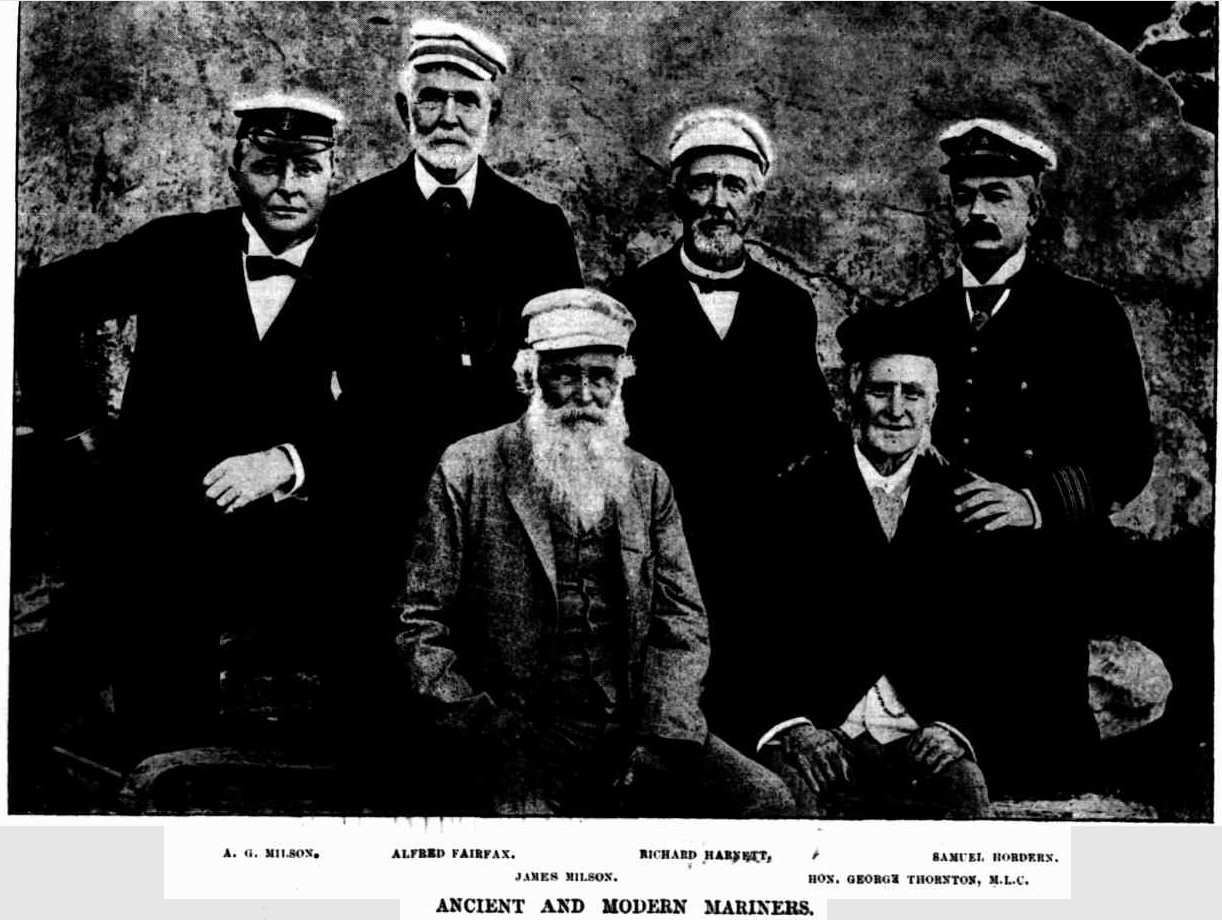
Afloat with the Ancient Mariners. (1897, January 30). The Sydney Mail and New South Wales Advertiser (NSW : 1871 - 1912), p. 231. Retrieved from http://nla.gov.au/nla.news-article163793889
Yachting in Sydney Harbour 50 Years Ago
In the centre of the picture is the Australian, the first yacht built with a canoe stern in place of the counter, with inside tuck. A barquentine-rigged P. and O. steamer is at anchor in Athol Bight. Another interesting feature of the picture is that there is visible only one house on Cremorne Point. Yachting in Sydney Harbour 50 Years Ago (1936, January 29). Sydney Mail (NSW : 1912 - 1938), p. 20. Retrieved from http://nla.gov.au/nla.news-article160637485
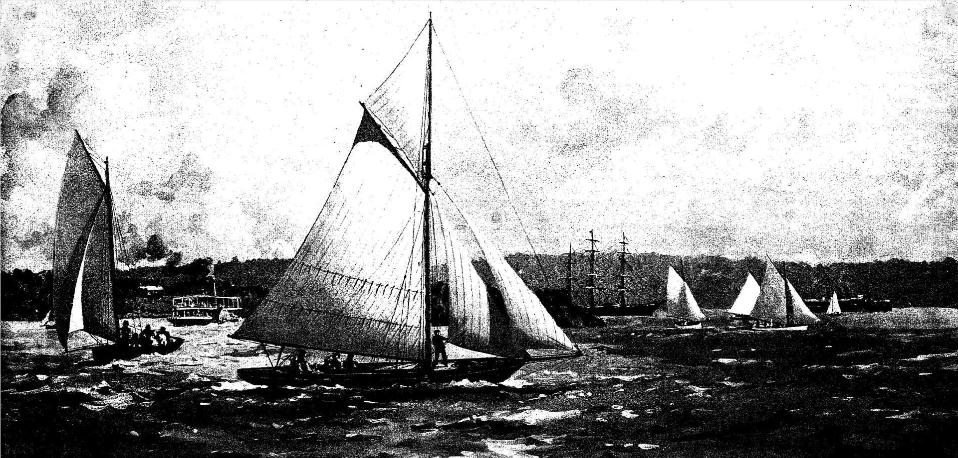

References and Extras
- TROVE - National Library of Australia
- Willoughby District Historical Society & Museum webpage on Richard Hayes Harnett Senior
- The First Royal Visitor To Australia: The Incident At Clontarf; March 12th, 1868
- The Mulhalls Of Broken Bay And Barrenjoey - Australian Champions
- Royal Prince Alfred Yacht Club's 150th Sailing Season Opening: A Few Notes Of Old
- Easter Cruises To Pittwater - Prince Alfred Yacht Club and Royal Sydney Yacht Squadron - 1890's on
Cecil Stanley Harnett Marriage - NSW BDM's:
14104/1913 HARNETT CECIL S FORTEY LEILA G ST LEONARDS
HARNETT-FORTEY.-November 25, 1913, at Christ Church, Lavender Bay, by Rev. J. H. Maclean, Cecil, youngest son of the late Richard Harnett, Esq., of Mosman, to Gladys, daughter of H. C. Fortey, Esq., McMahon's Point. Family Notices (1913, December 31). The Sydney Morning Herald (NSW : 1842 - 1954), p. 12. Retrieved from http://nla.gov.au/nla.news-article15488955
HARNETT.—September 6, at Spit-road, Mosman, to Mr. and Mrs. C. S. Harnett—a son. Family Notices (1914, September 12). The Sydney Morning Herald (NSW : 1842 - 1954), p. 12. Retrieved from http://nla.gov.au/nla.news-article15563365
FORTEY. Maud -May 19 Cheltenham, widow of late H C Fortey, beloved mother of Dorothy (Mrs J E Allan) Gladys (Mrs C S Harnett) Angela (Mrs A M Blumer), Ida (Mrs W H Cameron deceased) Theodore (deceased), Richard and Geoffrey Privately cremated May 20. Family Notices (1950, May 24). The Sydney Morning Herald (NSW : 1842 - 1954), p. 32. Retrieved from http://nla.gov.au/nla.news-article18163695
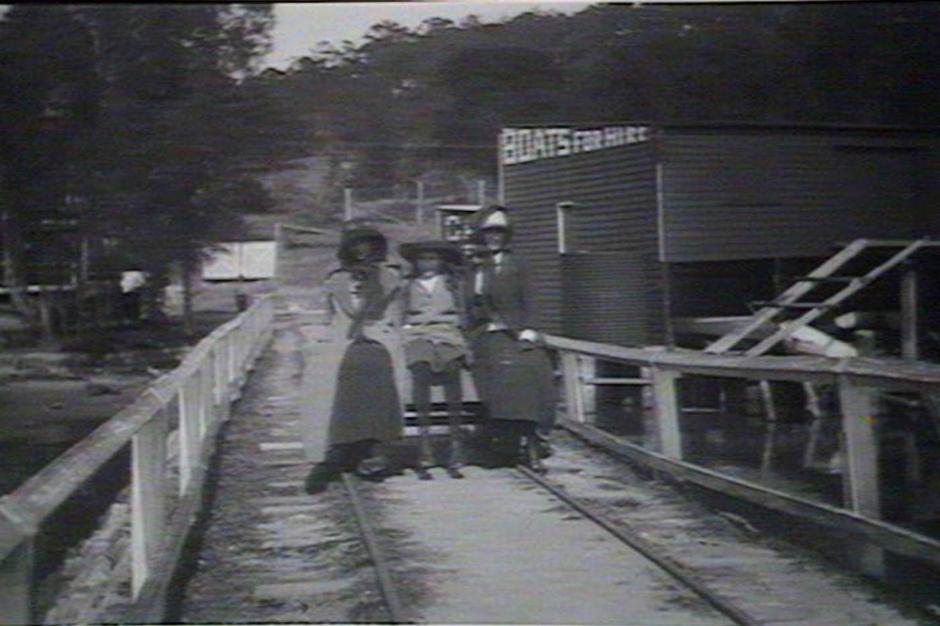
Is this photo of three women on Bayview Wharf the Roche Girls?; The noses would have it that it may very well be either Elizabeth Ellen ‘Nellie’ (1886) Mary Honorah (Born 1888) Katherine Agnes T (born 1889) and youngest girl Nano Ellen – became a nun (born 1892) - the lady on the far right may even be mother Katherine Mary Roche herself! - They are sitting opposite the entrance to where the family cottage and Bayview Post Office was - the Roche Estate.
After the death of her husband, James Joseph Roche, Katherine sold some portions of her lands, perhaps in part to meet death duties, and also because she wanted to move her children, still then young, closer to 'the city' - Mosman, for education, work, health reasons.
Bayview Wharf, three women on slipway trolley by Cecil S Harnett - GPO original locations or series - Macleay Museum: circa 1900-1910, Image No.: d1_04882, courtesy State Library of NSW.
Cecil Harnett's family were connected with Mosman from its earliest days, and he frequented Balmoral Beach, which was also the sand and saltwater bay below the Roche Mosman home. There is also another connection with the Harnett's in the form of Cecil's sister, Nurse Harnett (later Matron) who conducted Nurse Harnett's Private Hospital, originally opposite the Warringah Bowling Club and then in Ellamatta Avenue as 'Glengarry'. Lots of locals as well as children from further afield were born there.
A PRIVATE HOSPITAL.
Situated in picturesque Mosman, 'Glen-garry' is an ideal private hospital from every standpoint. Miss Harnett is the di-rectress, and she has a highly-skilled nursing staff to assist her. All kinds of medical and surgical cases are treated, and patients find themselves surrounded by every com-fort and convenience. The operating theatre, for instance, is one of the best to be found in any private hospital in Sydney. Miss Harnett makes special arrangements for country cases. The telephone number is 163 Mosman, or, if a personal visit is proposed, leave the tram at the public school. - Catholic Press (Sydney, NSW : 1895 - 1942), Thursday 9 November 1911, page 42
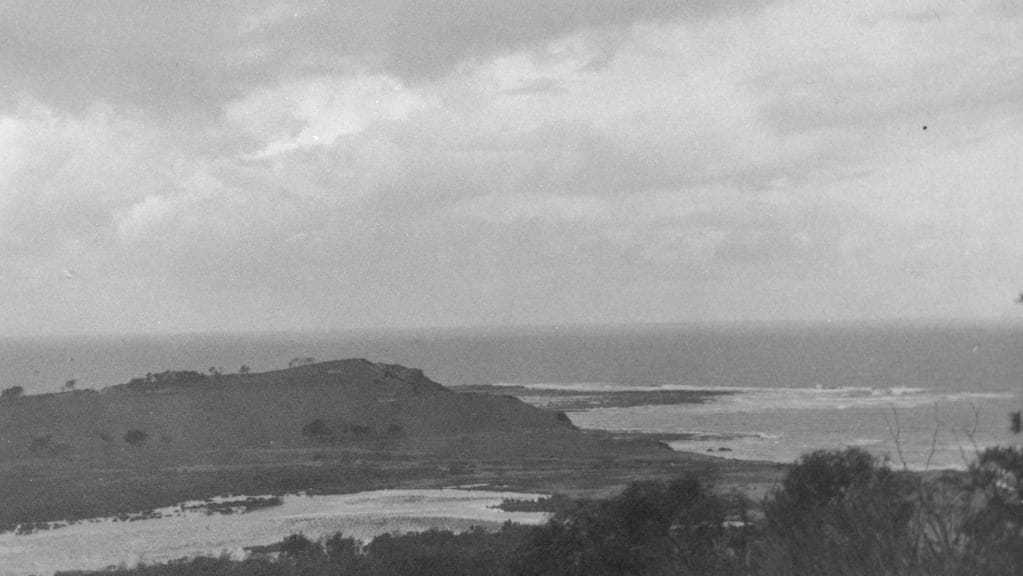
A CREEK AT NEWPORT BEACH, (Photo: C. S. Harnett.)
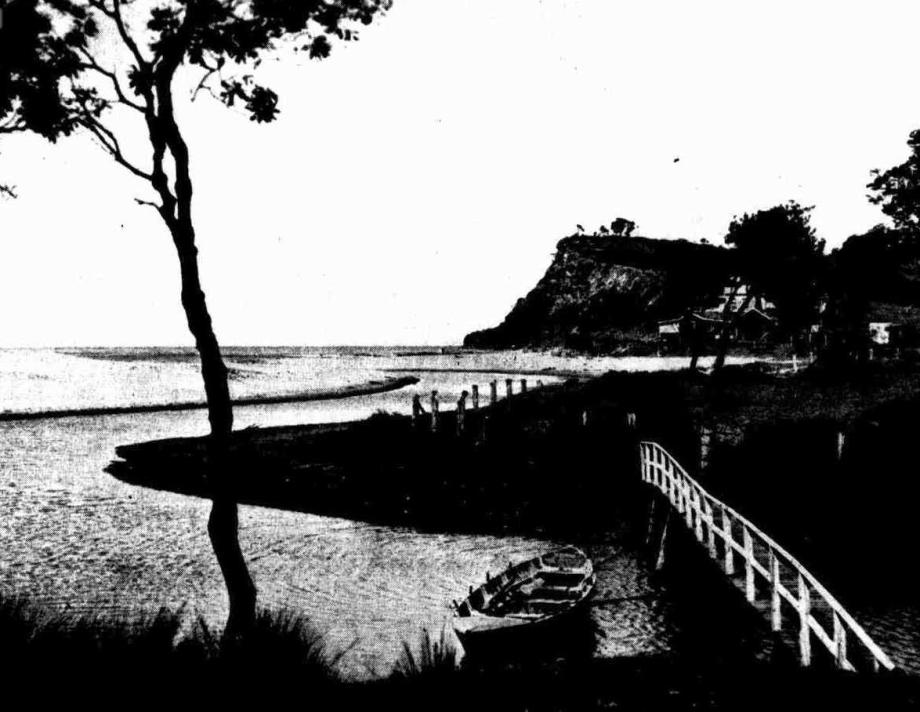
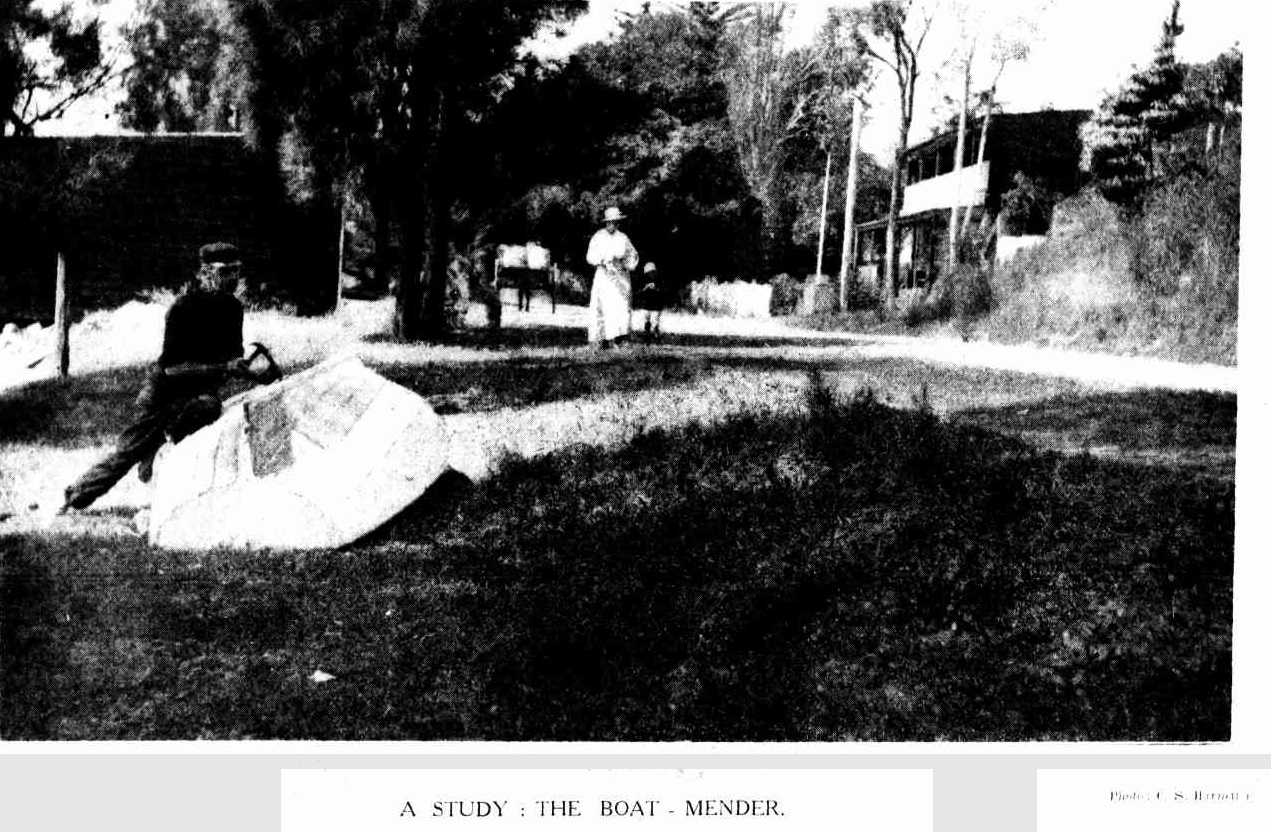
Picturesque By-Paths
On the Way to Palm Beach
With the great improvement in cars and the gradual betterment of road surfaces there is a tendency to drive 'rigid there and home again, no matter what interesting scenery is passed by the way. An instance is the popular run to Palm Beach, which opens up more picturesque views than any other motor road in Australia.
ON the run from Manly to Deewhy there is nothing to see, unless the main road is left at Brookvale and the branch road to French's Forest taken to Beacon Hill, the upstanding point on the right as you reach the hilltop. From this rocky eyrie there is a panoramic view that is like that, from BuIIi Pass. To the south lie Sydney Harbour -at South Head; along the western stretch the lagoons and beaches north of Manly lie outstreatched like a map; north-east is Deewhy Lagoon; and in the north may be seen some parts of Pittwater, and, nearer, Narrabeen Lagoon. So that as far as extensive rview goes Beacon Hill surpasses Bulli Pass.
The main road may be regained by a bush track with good surface which winds down the hillside and then joins up with the Pittwater road at South Creek road, Deewhy. before returning to the main road those who appreciate a secluded nook for lunch or morning tea should take a rough hush track for half a mile near the end of South Creek road, which will bring them to the upper reaches of the South Creek of Narrabeen Lagoon. This is a delightful stream for a swim, safe from sharks. The banks are grass, tree-shaded or sunny as you choose. An old bush track follows the creek down loan early farm-home, quite good for ears, and makes it possible to reach the upper end of Narrabeen Lake by car.
The return to Pittwater road must be made at Deewhy again, and if the car is a surpassingly good hill-climber another magnificent panoramic view may he obtained from the top of the cliffs behind Collaroy. The road goes straight up the cliff-side, and most cars will get at least two-thirds of the way, which means little trouble to reach the top. Along the cliff-side a track runs north, with a most entrancing view of the coastline from Long Reef north to Bungan Headland, below on the right hand. Before descending again the whole of Narrabeen Lagoon may be seen, sun-flecked and serene on even blustery days. Those who have once visited these heights of Narrabeen will want their friends to see what so many motorists have missed by racing along the main road, instead of diverging on chance of seeing something new. It is a big climb on foot, but well worth the. effort, and by car the ascent. is a trifle.
AFTER crossing Narrabeen Bridge a new road runs to the west to Deep Greek, another pretty bit of water scenery, different from anything round Sydney — a clear, cool stream, banked on one side by unusually level meadows, and overshadowed on the other side by towering cliffs, almost impregnable in their roughness and thick growth of vegetation. No more delightful picnicking spot could be imagined than at the foot of the falls halfway up the creek. The motor road stops at a grassy camping ground beloved of the Boy Scouts at holiday time. Instead of returning to the main road, about halfway back there is a new road, built by a private estate, which winds round and over the hillsides till it comes out on the road which joins the Pymble road and Narrabeen.
By far the best approach to Mona Vale is by way of this Pymble road, joining it at the tea-house on the heights. At Mona Vale the Bay view road should be taken past Church Point, around that corner, and along McCarr's Creek to the end. Many week-end motorists know this road goes past Church Point, all though it is well-made. At the road end are boatsheds. From here one of the prettiest boating trips imaginable may be made to the top of McCarrs Creek, where it runs into Kuring-gai Chase. Here is tropical foliage in its Virgin state; great overhanging gums and palm trees, immense ferns, and creepers of hawser-like thickness intertwining their branches.
At Newport there is that wonderful seascape from the lop of Bushrangers' Hill, again missed by most, motorists, yet easily rewarding the slight effort and time taken to reach the top. The. road out to Bungan headland here far surpasses in scenery anything seen so far at close hand from the car, but few diverge from the main road to see its wonderful sea views.
At Newport village, King - street, leads out to Saltpan along a fairly good, track, which opens out views of Pittwater, ana will eventually run round the waterfront to Clareville Beach and be one of the most popular parts of the run to Palm Beach.
NOW, one must return to Newport and pass on to Avalon before Clareville Beach may be reached, but no one with an eye for beautiful surroundings should miss this branch-off — Clareville Beach, with its shady gums over grassy lawns right on the whitest of sandy beaches, crescent shaped, and edged by the clearest, of salt water. It is an ideal holiday camping spot, and a haven of delight for the kiddies. There is a good road out to Careel Bay and along its southern shore, which branches off the Clareville road just as it reaches the ridge above the beach. This makes a lovely motor run for a mile or two through the trees, with glimpses of Pittwater on the left.
Everyone has heard of the Basin, but how few have bothered to take the short water journey across from Palm Beach to see this wonder place for yachtsmen! All you have read about in fairy books is here. And yachting men, above all, know bow to use a place, and leave it unspoiled. Many motorists, unfortunately, have no thoughtfulness for those who are coming after them at camping spots. Such heedless folk should see the Basin as it is after half a hundred yachting, men have used it at Christmas and New Year time.
C. S. HARNETT.
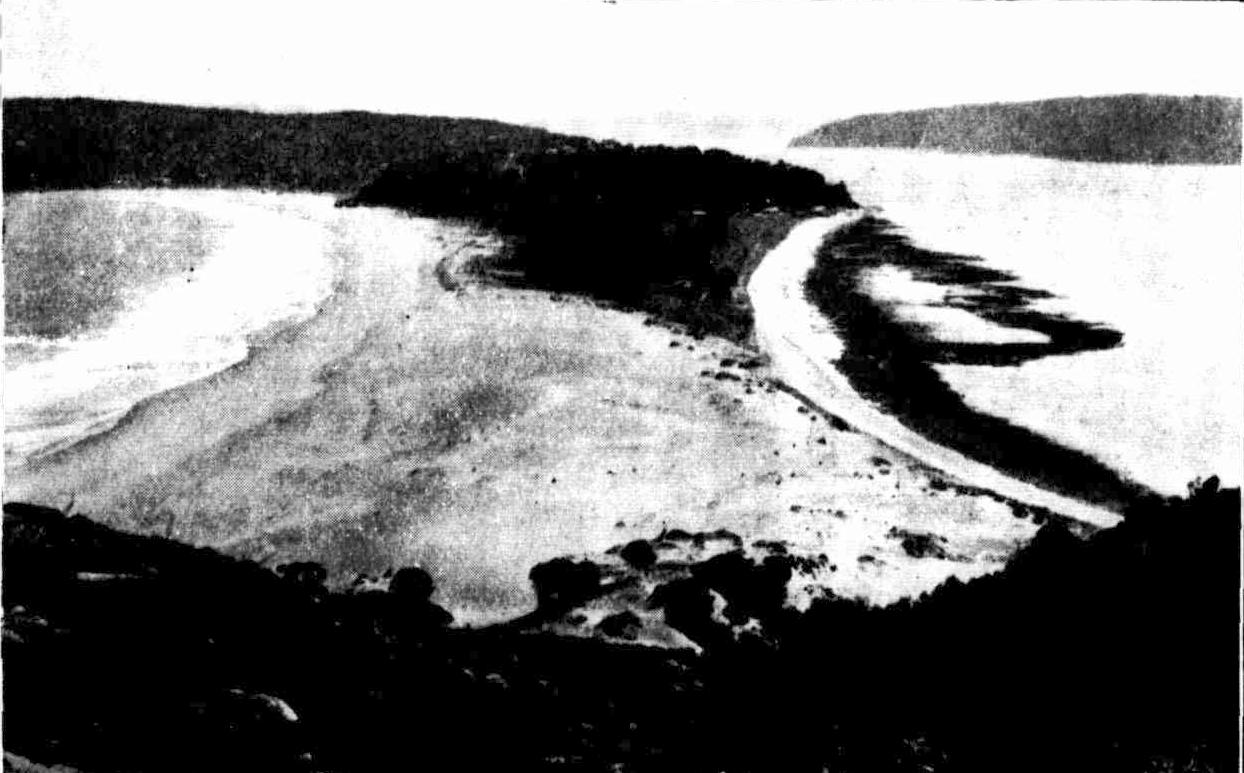
VIEW FROM BARRENJOEY LIGHTHOUSE. From this point a superb panorama presents itself. On the left is the northern part of beautiful Palm Beach, and on the right is a view of Pittwater. Picturesque By-Paths (1926, December 8). Sydney Mail (NSW : 1912 - 1938), p. 55. Retrieved from http://nla.gov.au/nla.news-article166521695
A NOVEL MOTORING PICTURE.
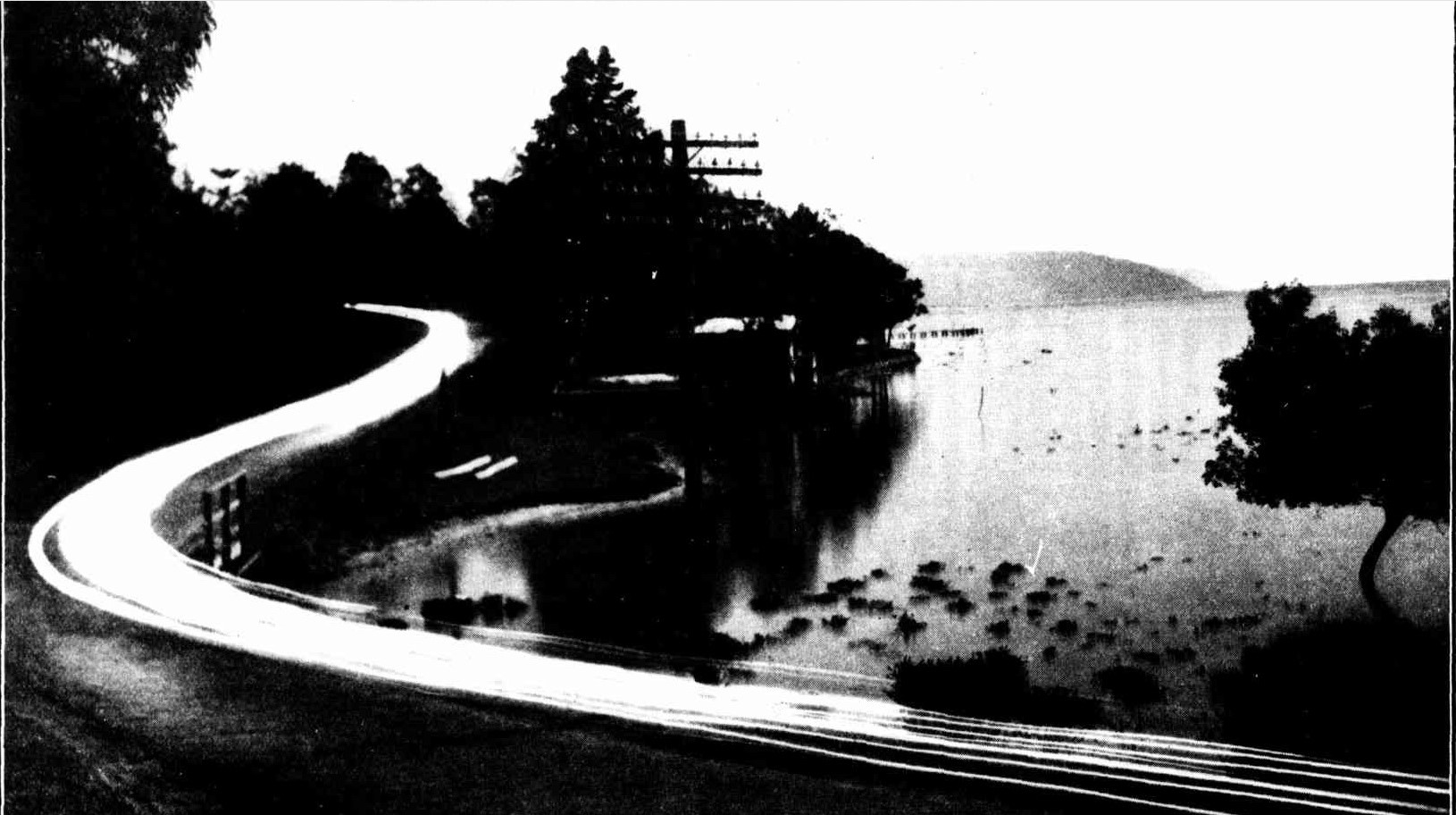
Where's the motor ? The scene is a beautiful one at Pittwater (N.S.W.). It was photographed on a moonlight night by Mr. C. S. Harnett. But note the streaks in the foreground and the white road winding up to the left. They are motor lamp-lights, which impressed themselves on the plate in an hour's exposure. A NOVEL MOTORING PICTURE. (1929, March 20). Sydney Mail (NSW : 1912 - 1938), p. 47. Retrieved from http://nla.gov.au/nla.news-article166261016
MOSQUITO YACHT CLUB.
The first sailing match with yachts owned by members of the Mosquito Yacht Club, took place yesterday. The following yachts wore entered for the match :
Annie S., Curtis
Daring, Dodds
Will Watch, Turner
Volante, Leader
Sea Belle, Macdonnell
Dolphin, Donaldson
Sylvie, Johnson.
The four first-named were the only boats that started. The prescribed course was to start from the Red Buoy, proceeding round the " Waterhen" in Darling Harbour, thence round Lightship and Sow and Figs, back round the steamer in Johnson's Bay, thence round Shark Island, and back to the Red Buoy, passing between it and the Flagship.
The committee had engaged the Black Swan, steamer, for the accommodation of members and their friends, and to accompany the boats in case of accident. The day, which looked lowering and stormy in the morning, cleared up before the hour of starting, and there was just enough of wind blowing from the north-east to bring into play the judgment of the crews, as well as to test the quality of the boats.
The Black Swan, after taking on board those who had received tickets from the committee, including a number of the fair daughters of New South Wales, steamed out near the Starting point. At eleven o'clock the boats started, the Will Watch taking the lead the Annie S, soon overhauled her, and on entering Darling Harbour the Annie S, and Will Witch ran for some distance nearly abreast, the Daring and Volante followed at a considerable distance, and the latter soon gave up. The boats reached the Waterhen in the following time :-Annie 30 minutes past ll, Will Watch 31 minutes past ll, Daring 32 minutes past ll. Here the Daring carried away her peak haulyards, and gave up. The Annie S. and Will Watch had now the race to themselves, and they were so well matched that the interest of the spectators was kept up to the very last. When opposite Pyrmont the Annie S. broke of, and the Will Witch again took the lead for some distance, and then both boats stretched away for the entrance to the harbour. The sight was a beautiful one, for tho breeze was fresh, and the boats almost buried in the silvery spray thrown up by the swiftness of their course through the water seemed in the distance like two enormous water-fowl skimming the surface of the magnificent harbour, while the steamer hovering near with her blackened spars, and her chimney emitting volumes of smoke, appeared more like some evil genie watching her opportunity to destroy than the guardian she really was; what a freight of youth, beauty, and happiness covers the deck of that steamer; sweet music discoursed by the band, and the still sweeter laugh, because telling of the inward happiness of the dancers, might be heard far and wide over the brood surface of the ruffled waters. Thus they swept on past the beautiful bays and romantic headlands that surround the harbour, and justify the opinion given by many travellers, that Port Jackson is the finest harbour in the world. When within a short distance of the Lightship the Will Watch ran ashore, with her top streaks started ; this detained her a few minutes, and indeed, decided the race, for the Annie S. kept a-head during the remainder of tho race-followed very closely by her rival. The Annie S. arrived at the flag-ship at half-past 3 o'clock, and the Will Witch was only 2 minutes in following her, amid the repeated cheers of the company on board.
This, the first match of the club, may be said to have passed off remarkably well, although, of course there were, as always happens in new institutions, mistakes and omissions in the arrangements, which experience only can remedy ; and if we may judge from the spirit evinced yesterday, there is little doubt the Mosquito Yacht Club will soon take rank among the many public institutions of which this portion of Australia is justly proud. MOSQUITO YACHT CLUB. (1856, October 14). Empire(Sydney, NSW : 1850 - 1875), p. 5. Retrieved from http://nla.gov.au/nla.news-article64978110
RULES AND REGULATIONS OF THE MOSQUITO YACHT. (1856, June 28). Empire (Sydney, NSW : 1850 - 1875), p. 4. Retrieved from http://nla.gov.au/nla.news-article60249911
WOOLOOMOOLOO BAY REGATTA.-The committee met on Thursday evening, the 6th instant, at Mr. Rhodes, the Dowling-street Wharf Hotel, for the purpose of paying the prizes. Mr. Underwood in the chair, Mr. Harnett officiated as hon. secretary. There were some protests, but very few of them allowed. In the 1st race, for water boats pulled by amateurs under 18, Connor, who claimed 2nd prize, was not allowed it, he not having pulled all the way. In tho 2nd race, for dingies pulled by youths under 16, the boy who came in first was declared disqualified, because he was three months older than the specified age. Thus the second and third boats were put first and second. ... AQUATICS. (1859, January 1). Bell's Life in Sydney and Sporting Reviewer (NSW : 1845 - 1860), p. 4. Retrieved from http://nla.gov.au/nla.news-article59869914
SYDNEY YACHT CLUB
The subject of yachting, when taken into consideration with our magnificent harbour- allowed to be the finest in the world-is one which all patriotic Australians must allow ought to be maintained here as a national sport. We feel sincere pleasure in giving publicity to aught that will contribute to spread a taste for, or that will tend to elevate, this noble and manly diversion. Notwithstanding the dulness which has for some years past prevailed amongst the lovers of aquatic sports, the true chivalric feeling has not been suffered to die out altogether ; and we are happy to find many amongst us who possess the proper spirit with regard to yachting ;many who are willing to give their best aid towards raising yachting to a higher position than it ever yet occupied in the history of this colony.
In support of this we have only to take a short retrospective view of yachting affairs-say for the last eighteen months,-see the yachts that have been built in the colony during that time, see the yachts that have been brought from the mother country to compete for the laurels to be won in Port Jackson. There cannot, therefore, be a doubt that the true taste for this sport is reviving with increased vigour, though almost imperceptibly to a casual observer. Then the recent establishment of two yacht clubs-the "Sydney Yacht Club," and the " Mosquito Yacht Club," -are facts which cannot be regarded otherwise than as indications of the increasing interest that is being manifested, and which must be a source of gratification as tending to give additional impetus to the development of this favourite amusement.
It is with the first named club that we have more immediately to deal, pursuant to previous announcement, the first sailing match for all yachts duly registered on the books of the club, came off on Saturday last The day was of the most desirable character-though a little too warm, a blight and almost unclouded sky, and a fresh north easter blowing, raised the hearts of the anxious competitors. Five yachts were entered to contest for the prize, a very neat silver cup-or, rather, "claret jug'-valued at 35 guineas -
Mr W Thompson's Eclipse .
Mr J Cuthbert’s Enchantress
Mr J Milsom's Mischief
Mr I S Dean's Challenge
Mr J Bramwell's Preston
The course laid down was the following To start from the mooring laid down in a line between the red buoy and Dawes' Point, thence round a flag boat moored in Big Manly Bay , returning round the flag ship off Fort Macquarie, then proceeding round the Light ship and Sow and Pigs, and back to the flag ship-leaving all rounding points on the port hand, except at the finish when the yachts had to pass between the flag ship and the reel buoy L ho steamer Victoria, with a band of music on board, was at the Circular Quay by half past ten o clock a m , to convey the A ice Commodore and members of the club and their friends down the harbour to watch the race There were not less that one hundred and fifty persons on board, about half the number being of the gentle sex. The bright eyes and the pretty faces of the ladies, and their varied dresses, with the gay uniforms of the members of the club formed a scene quite charming Every one seemed determined to be pleased, although there was somewhat of a want of room. About half past eleven the yachts were at their moorings, and the steamer then left the quay to witness the start the Customs yacht Satellite, with the Vice Commodore Captain Browne on board, bore up and brought to an anchor, taking her station as flag ship All the preliminaries being adjusted the signal for starting was given precisely at twelve o clock.
THE RACE
At the firing of the gun the yachts almost simultaneously hauled up their peaks. The Challenge got under weigh fast, the Mischief (having the windward station) next, the Eclipse and the Enchantress together All the bouts stretched over to Kirribilli Point on the starboard tack, as closely as possible , the Eclipse and the Challenge went about together, the former taking the windward station and setting her gill' first , the Mischief followed third, and the Enchantress last, they sailed past Farm Cove all in a bunch. The Mischief had some difficulty in setting her gaff, so also had the Enchantress , but they eventually shook out their canvas to the breeze. The boats again tacked near the north end of Garden Island , the Eclipse first, the Challenge second, the Enchantress close up in the wind in fine style, third, and the Mischief log-like, visibly losing ground They then bore up for Mossman's Point, the Eclipse sailing in the winds eye, and after going about close to the shore increased her lead at every length, the breeze at that time freshening. The Challenge and the Enchantress followed across to Mossman's in the wake of the Eclipse, the Enchantress being lo windward, though the Challenge was to leeward she was ahead of the Enchantress
As they neared the shore between Cremorne and the Point, the Challenge went about, but she had hardly got way on when the Enchantress was put up in the wind, and began to shake (whether or not it was the intention to gibe about we cannot say), and the Challenge in crossing the Enchantress's bows got foul of her bowsprit which went through her mainsail Both boats fell broadside on to each other. The foul caused a delay of about a minute, and speculation was rife on board the steamer as to which boat was in fault. The rules of the Club are that the yacht on the port tack must give way to the yacht on the starboard tack, but it could not well be determined, in the opinion of many, that the Enchantress was on the starboard tack at the moment of the collision, though certainly the Challenge was on the port tack The O'currence was natural enough, the Challenge being slightly ahead, hut to leeward, endeavored to get to windward of the Enchantress,(a point worth trying for) by going about first, the Enchantress seeing this, and knowing that by all laws of yachting she might " shake" if she pleased-when on the starboard tack going to windward-immediately put up her helm. The two boats were so close together that if the Challenge-after going about-had tried, she may not have given way to the other by going astern as she would thereby have lost all she had gained in the previous board, and probably come into collision with her As it was, she followed the only course open for her, and she endeavoured to clear the Enchantress, but the effort was not attended with success, as the corner of her mainsail was caught by the bow sprit of the Enchantress. However, neither of the boats lowered her distinguishing flag in protestation so that the foul could not, under any circumstances, have been entertained. The Challenge gained for the none by the occurrence, she having got under way considerably before the Enchantress.
The Eclipse continued increasing her distance , and it was plain that if the wind kept up none of the others had a chance with her The Mischief brought up the tail of the race. The leader went away down this side of Point Piper and then made a board over to Bradleys Head, from thence close hauled towards Shark Island. The other three boats in the same order kept close along the North Shore to Bradley s, across to Chowder Bay on the starboard tack and then down to the Bottle and Glass, on the port tack was the leader’s rule. From thence each boat was left by the spectators to exercise her own judgment, as there was plenty of wind and good sea room The steamer then made direct for the flag boat at Manly, and awaited the issue of the rounding of the yachts. The Eclipse rounded at 21 m. 30 sec. past, the Enchantress 27 m. 30 sec , the Mischief 38 ra.55 sec ; the Challenge, 31 ni. 10 sec., there being a difference of 10 m. 40 sec between the first and last boat». It was now thought that the Enchantress would show some running and overhaul the Eclipse, but it was soon seen that this could not be the case. This was about the most picturesque part of the race, each boat had all her available canvas hung out as much as she could carry. The same order was main turned to the flag-ship. The boats, except the Challenge, took in all their spare sail to gibe round the flag-ship. The Eclipse rounded at 14 m.45 sec. past 2; the Enchantress, l8 m. 45 sec; the Mischief, 84 m. ; the Challenge (passed) 3G ni., and then ran home. The Enchantress, it will be seen gained two minutes on the Eclipse in running before the wind. The race down to the Sow and Pigs and light-ship was of much the same characters as when the boats went down the harbour the first time. The Eclipse rounded at 10 ra. 40 sec. rast 3 ; the Enchantress, Ki m.20 sec. ; the Mischief did not show round. The run home did not occupy much time, the Eclipse passing the ling-ship at 43 m. 44 sec. past 3 ; the Enchantress, 40 ra.25 sec. ; the Eclipse winning by nearly 4 minutes. The time occupied in sailing the entire course, which is considered not far short of 30 miles, was 3 hrs. 42 m. 44 sec. On the firing of the gun announcing the finish of the race, the successful yacht was greeted with three hearty cheers from the steamers.
On board the steamer, which accompanied the yachts all through the race, the majority passed their time pleasantly in paying homage to Terpsichore; though there was not much room for dancing, a goodly array continued to trip the light fantastic. Pleasure beamed on every countenance ; and when Mr. R. Harnett, who steered the Eclipse, came on board, he was congratulated in the heartiest manner upon his success. Captain Browne presented the prize, with the addition of a cheque for 10, to the owner of the Eclipse, W. Thompson, Esq., and, in proposing his health, complimented him in an appropriate speech on his good fortune. Mr. Thompson returned thanks, and acknowledged his obligations to Mr. Harnett and the crew.
The result of this race-one of the best contested we have ever seen-seemed to give general satisfaction.The Eclipse and the Enchantress were both handled in a style which called forth the admiration of all spectators As the sun was ye, high, it was proposed for the gratification of the ladies, to go down the harbour again; this met with a ready response, and the steamer continued plying up and down the harbour till near sundown. As she came up for the last time she passed astern of her Majesty's ships Juno and Herald, the band striking up the National Anthem. The compliment was returned by both the vessels dipping their ensigns. Thus concluded a day of the most entertaining character. With all the perceptible deficiencies almost necessarily attendant upon a maiden effort, we conclude by wishing success to the Sydney Yacht Club. SYDNEY YACHT CLUB,. (1856, December 1). Empire(Sydney, NSW : 1850 - 1875), p. 5. Retrieved from http://nla.gov.au/nla.news-article64980595
THE SYDNEY YACHT CLUB.
ON Saturday a spirited, and, in despite of bad weather, a very interesting race of a twofold aspect, took place between yachts belonging to the Sydney Yacht Club; first, a sailing match for a handsome and richly chased silver cup by second class yachts ; and secondly, a race between two first class yachts, the Surprise and the Mischief (between which there had been previously a tie), to determine the winner of the Woolloomooloo Bay Regatta Cup. Both of the races commenced simultaneously, the whole six boats sailing over the same course; and although in their selection of the day the Club had not their usual good fortune, the weather was certainly the only thing amiss. The entrances for the smaller yachts were as follows ;
No. Name. Owner. Distinguishing flag.
1.-Zephyr....J. Cooper .Blue and white
2.-Kathleen...R. Harnett .Blue peter.
3.-Gitana.W. M'Quade .Light blue.
4.- Emma....M. F. Josephson.Blue, and white star.
The particulars of the Mischief and the Surprise were these
l.-Surprise .S. C. Burt. Red
2.-Mischief .T. J. Dean ......White, with red cross.
The Hunter steamer, under the command of Captain Sullivan, was engaged as the flagship, and left the north-east end of the Circular Quay twelve minutes after one o'clock - three guns having been fired from a boat of H. M. S. Cordelia as signals to the yachts at their moorings in Farm Cove. At the first they took their stations, at the second they prepared to start, and at the third (at 1 p.m.,) they went off in the following order:- the Zephyr first, but going a little to wind-ward; the Gitana second, the Kathleen third, and the Emma fourth. The Kathleen, however, although she made an excellent start; lost wind near the buoy, and got well nigh becalmed, which placed her for a long time at a considerable disadvantage.
The two larger vessels, the Surprise and the Mischief, also made a good start, and opinions were evenly divided as to their respective capabilities. Then came on a drizzling rain-first slow, disagreeable, and foggy and then fast and furious. It was really too much. A few enthusiasts, with and without umbrellas, faced the "pitiless pelting of the storm" on the paddle-boxes, but the major and more prudent part of those present took refuge under the shelter (such as it was) of the awning - becoming either damp and melancholy, or resolutely cheer-ful and jolly under rather trying circumstances. On the whole, Tapleyism was extensively practised, a species of philosophy, assisted by an excellent lunch below, which, like every thing else about the flag-ship, was fully up to the mark. On passing Bradley's Head the Zephyr was still foremost, the Surprise (1st class) next, the Gitana (but at some distance) next then the Emma, and the Mischief (1st class), .and the Kathleen - in consequence of what has been already adverted to - a longway behind. Abreast of St. George's Head the Mischief began to overhaul the Surprise, and subsequently the yachts went up into the bay at Manly Beach under a light wind in splendid style, forming one of the prettiest pictures that can be imagined. The Surprise now led, immediately after which came the Gitana (Mr. M'Quade's), and, side by side with her, the Mischief. Then at a short interval followed the gallant little Zephyr - having kept the post of honor until she came into rough water - and after her, at an equal distance, the Emma - the Kathleen being still behind. On arriving at the red buoy at Manly, it was rounded by the yachts in the following orders
Surprise, first, at 2h. 30m. 50s. p.m. Gitana, second, 2h. 31m. 10s. " Mischief, third, 2h. 31m. 55s. " Zephyr, fourth, 2h. 31m. 45s. " Emma, fifth, 2h. 33m. 5s. " Kathleen, sixth, 2h. 41m. 0s "
Soon after the rain came on again more heavily than ever, the wind occasionally falling to an almost dead calm. It became more and more evident that the races could scarcely be terminated that evening, and that the baffling character of the wind and weather would prevent the yachts from returning round H.M.S. Herald, in Farm Cove, and then round Shark Island and back off Fort Macquarie - within the appointed time, viz., at seven p.m. This time had been fixed upon by the sailing committee on board the steamer, who, seeing the probabilities of a "dead calm, consulted about three p.m., and determined, should the races be not ended at that hour, that they should be stopped, and the decision of the committee was intimated to the contesting parties. Nevertheless it seemed long doubtful, from the superior sailing and skilful management of the boats, whether it might not possibly be done. The Hunter accordingly landed some of those on board at Woolloomooloo Bay, returned to her position below Fort Denison, and watched the boats as they came up. They went round the Herald in the following order:
Surprise, at 5h. 38m. 30s. p.m. Emma, 5h. 43m. 45s.
Gitana, 5h. 50m. 40s. "
Kathleen 5h. 51m. 30s. "
Mischief 5h. 54m. 50s. "
Zephyr 5h. 55m. 0s. "
The Surprise continued with the lead, followed by the Emma. The Mischief bore up at Bradley's Head, and, as arranged, the gun to terminate the race was fired from a boat of H. M. S. Herald (at the vice-commodore's signal from the flagship), precisely at seven o'clock, none of the yachts being in at the time. The Surprise, however, came up in a few minutes after, and the Emma close behind. Thus the Surprise was first for the larger yachts, and the Emma the first for the second class yachts. It is understood that the umpire will take the opinion of the committees of Woolloomooloo Bay and the Sydney Yacht Clubs, whether, under the circumstances the two first arriving yachts should not have the prizes awarded to them. The sailing committee having decided to fire a gun at 7 p.m. to-determine the race, and the owners of the boats informed thereof, the umpire had no option but to carry out the decision. THE SYDNEY YACHT CLUB. (1859, January 10 - Monday). The Sydney Morning Herald (NSW : 1842 - 1954), p. 5. Retrieved from http://nla.gov.au/nla.news-article13017220
FIFTH RACE.--To start at half-past 12 o'clock. For all yachts not exceeding 25 foot on the keel. Course:To start from the flagship round a boat in Johnson's Bay, thence round Shark Island, back round the flagship, again round-Shark Island, and back round the flagship. Prize: Silver Cup, valued at £20. Entrance; £2 2s.
Ida-Blue, with gold star, J. J. Josephson ... 1
Frolic-Blue-M.Younger ... . 2
Emma-Blue, with crest-M. F. Josephson .... 0
Zephyr-Blue and white- J. Cooper . ......... 0
Blue Bell-White and green-White and green-W. Watson ... 0
Tenzer-Blue Peter-R.Harnett .......dr.
The Frolic was a general favourite for this race, the strong breeze being considered admirably adapted to her sailing powers. The contest lay all through between her and Ida, but the latter in the end came off victorious-the race having been remarkably close from start to finish. BALMAIN REGATTA. (1859, December 1). The Sydney Morning Herald (NSW : 1842 - 1954), p. 3. Retrieved from http://nla.gov.au/nla.news-article28629483
A Veteran Colonist.
Richard Hayes Harnett, 82, a colonist of upwards of 60 years, died on the 15th instant at Chatswood. Mr. Harnett was a native of Cork, and in 1840, when a young man, arrived in this State in the sailing ship China. After a short stay in Sydney he visited Maitland and then Wellington where he passed some years in pastoral pursuits. Returning to Sydney. Mr. Harnett entered the old firm of Rowand and Co., general merchants and shortly after started business in Hunter-street as a commercial broker.
He was one of the pioneer settlers on the North Shore, and in 1871 entered into partnership with the late Sir Alexander Stuart, with whom he was associated in opening up the whole district. He resided at Blue's Point in 1847, but removed to Gore Hill in 1861, where he remained until 1872. In that year he removed to Mosman.
Mr. Harnett started the first ferry service to Mosman, and controlled two lines of omnibuses running in the district, the one to the fortification at Middle Head and the other to Chatswood and Pymble, then almost bush land. As a yachtsman Mr. Harnett was well known. In 1867 he designed and built the old Australian, claimed to be the pioneer of the modern racing yacht. Mr. George Thornton took her lines in England in 1868, where they were accepted by a firm of builders. Mr. Harnett was an original member of the Prince Alfred Yacht Club, one of the promoters of the Anniversary regatta, and was connected with other sailing clubs. Of the pioneers of yachting in Sydney Mr. James Milson is now the sole survivor.
A Veteran Colonist. (1902, November 26). The Sydney Mail and New South Wales Advertiser (NSW : 1871 - 1912), p. 1381. Retrieved from http://nla.gov.au/nla.news-article165382626
AQUATICS
THE LATE DAN SHEEHY.
BY W.
The recently deceased Dan Sheehy, whose portrait appeal's on another page, was a very old Sydney waterside identity. In his palmy manhood Mr. Sheehy was a man of remarkable physique, with chest and shoulders of such herculean proportions that they almost amounted to a deformity. He will be best remembered by old-time yachting men as the builder and designer, in conjunction with the late Mr. R. Harnett, of the yacht Australian.
The Australian was a veritable freak in the racing line, and distanced every yacht opposed to her. She was built at Woolloomooloo Bay, which was then a mud flat, and launched in 1859, being taken over the mud on sets of 'bus wheels. She proved such a success that a larger yacht on something the same lines was built, the Xarifa, which also carried all before, her. This yacht afterwards went to the South Sea Islands, where for years she was used as a Royal yacht by the late King Thackambau. When Mr. Walter Reeks, the English naval architect, arrived in Sydney in comparatively late years, his first remark when he saw the old Australian, was: ' Why, the designer of this boat lived half a century before his time; she is the counterpart of the latest English models.' AQUATICS. (1906, July 4). The Sydney Mail and New South Wales Advertiser (NSW : 1871 - 1912), p. 61. Retrieved from http://nla.gov.au/nla.news-article163684906
LATE DANIEL SHEEHY.
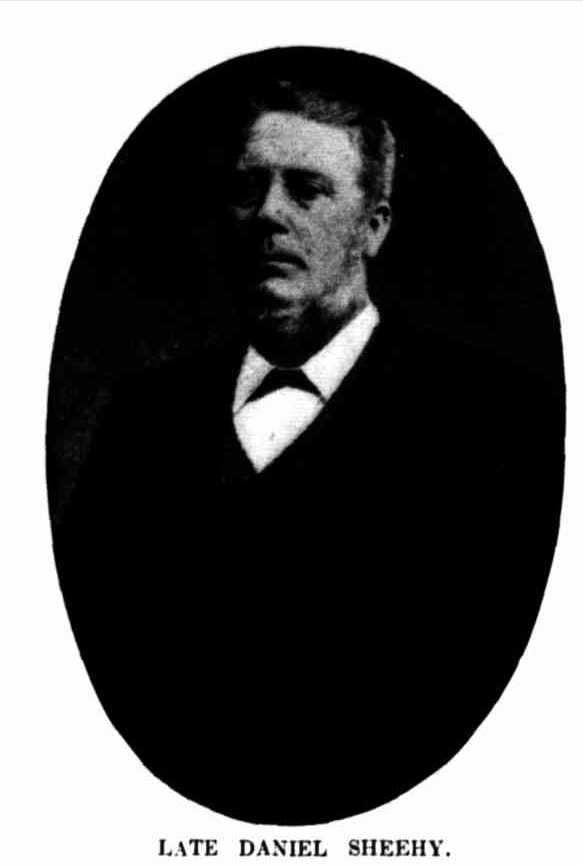
Mr. Sheehy was a well-known figure in maritime circles, and earned considerable notice for his many clever salvage feats throughout Australia and the islands. He was also regarded as an enterprising purchaser of wrecks, and on many occasions got abandoned vessels, and dismantled and otherwise dealt with them. Of a retiring disposition, he was generous and charitable to a degree. No title (1906, July 4). The Sydney Mail and New South Wales Advertiser (NSW : 1871 - 1912), p. 35. Retrieved from http://nla.gov.au/nla.news-article163684884
The estate of the late Mr Dan Sheehy, master shipwright and marine director, of Cook-street, Glebe Point, who died on June 21 last, has been proved for probate purposes at £29,326 7s 1d. Personal (1906, September 17). National Advocate (Bathurst, NSW : 1889 - 1954), p. 2. Retrieved from http://nla.gov.au/nla.news-article157295582
A-BANTRY BAY RESUMPTION.
The hearing of the action brought by Robert James Wilson, Richard Hayes Harnett, and Henry Charles Catt, trustees in the estate of the late R. H. Harnett. and Charles Alfred Laurence, and Colin Stephen, trustees of the estate of the late S. A. Stephen, against the Minister for Works, was concluded in the Banco Court yesterday afternoon. The plaintiffs claimed £12,920 in respect of the resumption under the Public Works Act of 63 acres of land at Bantry Bay, Middle Harbor, for the purpose of constructing a magazine for the storage of explosives. The Government assessed the value of the land at £2813. The jury returned verdict for the plaintiffs for £4180. The case lasted nine days. A BANTRY BAY RESUMPTION. (1908, April 1). Evening News (Sydney, NSW : 1869 - 1931), p. 5. Retrieved from http://nla.gov.au/nla.news-article112965494
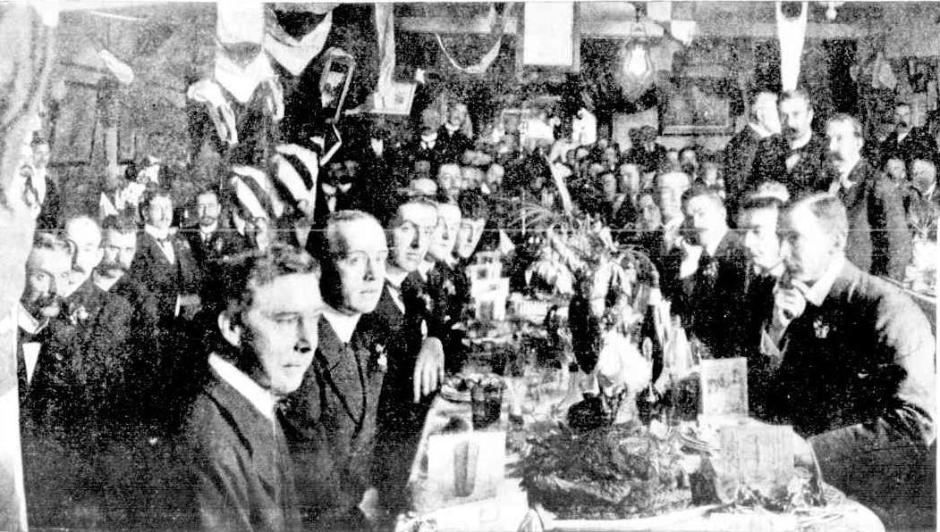
PRINCE ALFRED YACHT CLUB DINNER-FLASHLIGHT BY WYLIE.— See Aquatic Columns. Presentation to Lieutenant Hixson. (1900, August 11). The Sydney Mail and New South Wales Advertiser (NSW : 1871 - 1912), p. 325. Retrieved from http://nla.gov.au/nla.news-article163693316
Prince Alfred Yacht Club. OPENING OF THE NEW ROOMS.
At Bulls-chambers, Moore-street, on the 3rd last., a large company of yachting men assembled at the invitation of the Prince Alfred Yacht Club to partake of a dinner given in honour of the opening of the club's new rooms. Commodore S. Hordern occupied the chair, Vice-commodore W. M. Marks and
Rear-commodore H. A. Jones filing the vice -chairs. Amongst those present were Messrs. P. J. Jackson, J. H. Harris (hon. secretary), Sydney Dempster(hon. treasurer), Drs. Burne and Knaggs, and Messrs. A. Minnett (Royal Sydney Yacht Squadron),J. O. Fairfax (vice-commodore Sydney Amateur Sailing Club), Charles Helsham, H. W. Thallon, James Cox, C. T. Brockhoff, J. E. Chinnery, F. S. Adams, F. J. Donovan (commodore Johnstone Bay Sailing Club), A. C. Jewett, H. Mills (Mayor of Balmain), Russell-Marshall, James M'Intosh, J,F. King, F. G. Trouton, F. P. Pring, O. Backhouse, Tillock, Watson, Giltinan, C. Tayler, 3. E. O'Brien, Parkinson, W. H. Murrell, S. Stevens, J. George, and Lyons.
Mr. J. A. Minnett, of the Royal Sydney Yacht Club, proposed the health of the 'Prince Alfred Yacht Club.' For that club, he said he had the kindest feelings, as it was the first one he had joined in New South Wales, nearly 20 years ago. Then the club was a struggling institution. The chairman, in responding for the club, said he was pleased to hear Mr. Minnett say what he had said about Mr. Harden. The club was a successful one now, and had many friends. It was a live club. Sixty members as a rule attended its monthly meeting. The club was powerful because its members all pulled together, and the sinews of war were in the right place, namely, the bank. (Hear, hear.)It was an ambitious club, because it was anxious ' to instruct its members properly. He felt sure, through the way things were going forward, the club's two rooms would soon not be large enough to hold the club. Owing to the limited space now available the club had been unable to invite all its friends to be present. He trusted, when it was known, that excuse for not inviting them would be accepted. Some day when the club was able to build an establishment of its own and had a very large room it would be only too pleased to entertain all its friends. (Cheers.)
Mr. W. M. Marks, vice-commodore of the club, also responded. He said the man who had been the general of the whole campaign which had resulted in 'making the club as successful was Mr. Syd. Dempster. Mr. H. A. Jones, rear-commodore, said the reason the club had gone ahead, so well was because the members worked in harmony with one another. During the winter season the club rooms were made attractive, and in the summer season as many races as possible were arranged for as large prizes as the club was able to give. Next yachting season several new boats were coming out of one class, namely, 30-footers. They would give things a good start, and conduce to an interesting and exciting time. Mr. Sydney Dempster, who was heartily cheered, said he had been given a lot of credit, but he merely acted on the advice and according to the wishes of the house committee, and, as had been said, all pulled together. He thought the P.A.Y.C. ought to be proud of its position, for he saw before him one of the best meetings of yachting men which he had seen in Sydney for some years. There was a determination discernible to put yachting in Port Jackson on a better footing. (Hear, hear.) The old boats must be dropped, and English and American models would have to be followed. When that was done the rest might be left to the many energetic supporters of yachting in this community.- (Cheers.)
Mr. W. M. Marks, vice-commodore, proposed,' Kindred Clubs.'
Mr. Minuett responded for the Royal Sydney Yacht Club.
Mr. J. O. Fairfax, on being called upon to speak said when he accepted the invitation of the flag officers of the P. A. Y.C. to be present, he intended to appear purely in a private capacity, but as the club had received the toast in such a friendly spirit he had much pleasure in replying on behalf of the Sydney Amateur Sailing Club, thanking the P.A.Y.C.for its generous hospitality and good wishes. He saw a picture in an American piper the other day, of a big hairy caterpillar crawling along' a lawn. Seeing a lawn-mower approaching it, said,'I guess I will have my hair cut.' That was called taking advantage of opportunity. He was in the same position in accepting the invitation to the dinner, for he wanted to meet the men who were arranging to bring out the 30-footers and have a quiet yarn with them. Mr. Donovan responded for the Johnstone's Bay Club, and Mr. C. H. Helsham for the Anniversary Regatta committee.
Messrs. Parr Watson, T. Bainford, and W. H. Lynch sang a number of songs, accompanied on the piano by Mr. L. De Groen. Prince Alfred Yacht Club. (1900, August 11). The Sydney Mail and New South Wales Advertiser (NSW : 1871 - 1912), p. 354. Retrieved from http://nla.gov.au/nla.news-article163693372
YACHTING.
Prince Alfred Yacht Club.
The members of the. P.A.Y.C. have now established themselves in remarkably snug quarters in Bull's Chambers, Moore-street, where they have two large and comfortable rooms for themselves. The walls are hung with splendid pictures of well known "flyers," ancient and modern, while in the billiard-room there is a useful gift from the commodore (Mr. S. Hordern). The gift in question is a current chart, and by means of little machinery one is enabled to locate the currents, particularly those of the Southern Ocean, and on the east coast of Australia. The chart is not only useful, but valuable.
On August 3 the flag officers entertained a number of members and friends at dinner in the new rooms. The object of the gathering was to declare open the additions, and have a "jolly" good time. The both duties were performed right well by all present. The commodore (Mr. Hordern) presided, Mr. Marks (vice commodore) was in the vice-chair, while the rear commodore (Mr. Jones) was also in attendance. The visitors included Messrs. J. A. Minnett (of Royal Sydney Yacht Club), J. 0. Fairfax (Sydney Amateurs), F. J. Donovan (Johnstone Bay), and C. H. Helsham (University Rowing Club). Mr. J. A. Minnett proposed the "P.A.Y.C." in felicitous terms, referring to the good work of a former commodore (Mr. Harden)," then during later year's to what had been done by Mr. S. Hordern. Mr. Minnett expressed pleasure at being, present, and congratulated the club upon its present successful position.
The commodore, in responding, made a humorous speech. Afterwards he became, serious, and offered sound advice to the members of his club. They were now a powerful club, and to remain powerful it was necessary that they should pull "together". Further, they had made up their minds to make yachting one of the foremost sports of New South Wales. Mr. Marks also responded, and in the course of a capital speech, reminded the gathering that the P.A.Y.C. had a "good officer in Mr. Syd. Dempster. Speeches of a more or less humorous characters, were also delivered by Dr. Burne, Messrs. Dempster, Harris, and Jones. "Kindred Clubs" was the next toast honored, and it was drunk with enthusiasm, and acknowledged by Messrs. Minnett, Donovan, Fairfax, and Helsham. The meeting then resolved itself into "harmony." Songs were contributed by Messrs. Rainford, Watson, Lynch, and others. Selections were also given by De Groen's band. Mr. Harris was secretary for the evening, and is deserving of the heartiest praise for his efforts-in connection with the movement. YACHTING. (1900, August 11). Australian Town and Country Journal (NSW : 1870 - 1907), p. 54. Retrieved from http://nla.gov.au/nla.news-article71388101
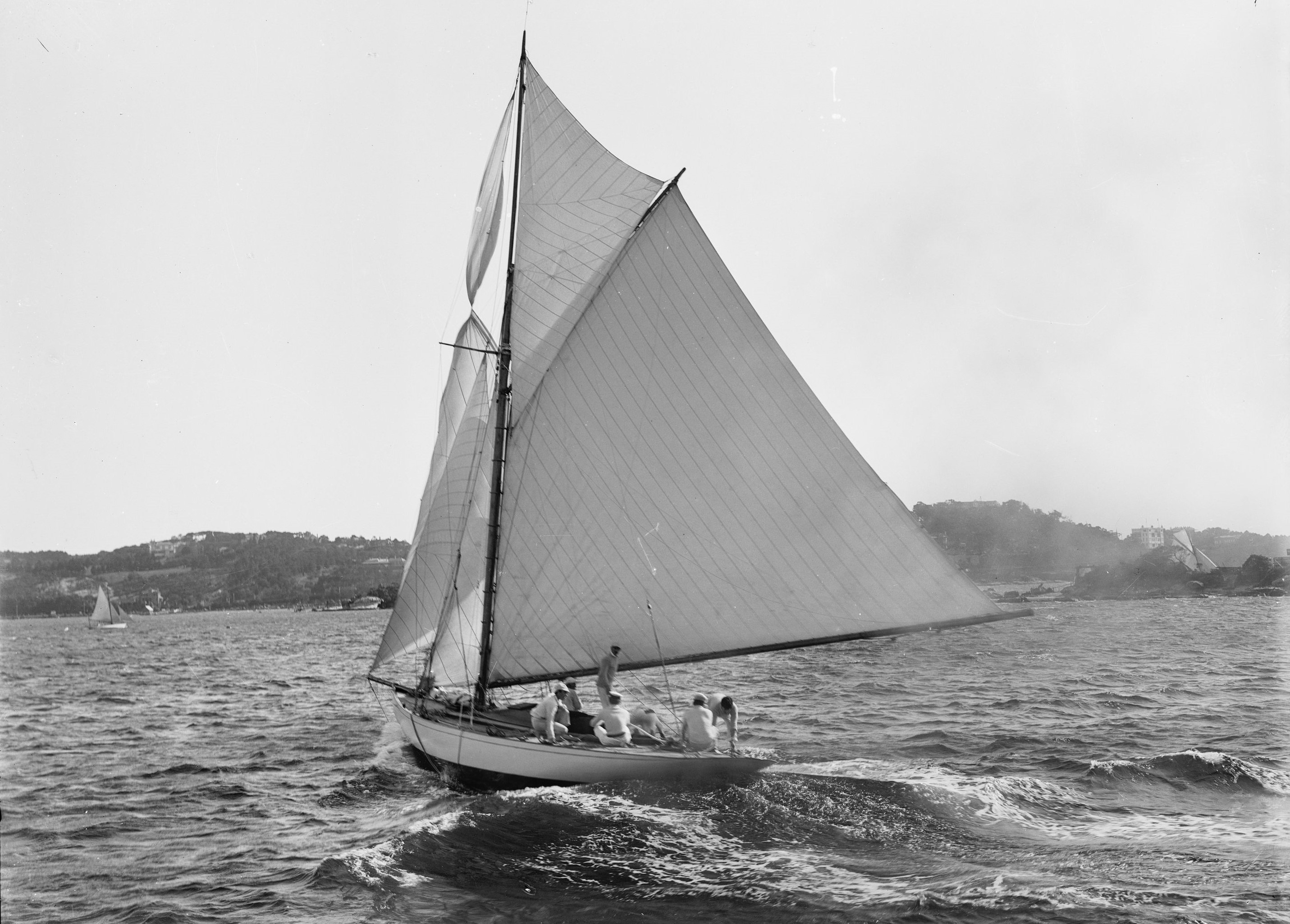
Camp Life at Field of Mars, Ryde.
The scenery of Ryde and its neighbourhood is of the most picturesque character, offering glimpses and peeps of diversified views, with variations of light and shade, charming in the extreme. Ryde parish church is an elegant structure, reminding us of the old English village style, and its graveyard contains many handsome tombs, placed by loving mourners to the memory of the departed. Ryde itself, is the nucleus of what will one day be a large and flourishing town.
The Field of Mars, portions of which our illustrations represent, is distant from Ryde some-thing less than three miles.
The " Government Party " Camp, Field of Mars, near Sydney, New South Wales.
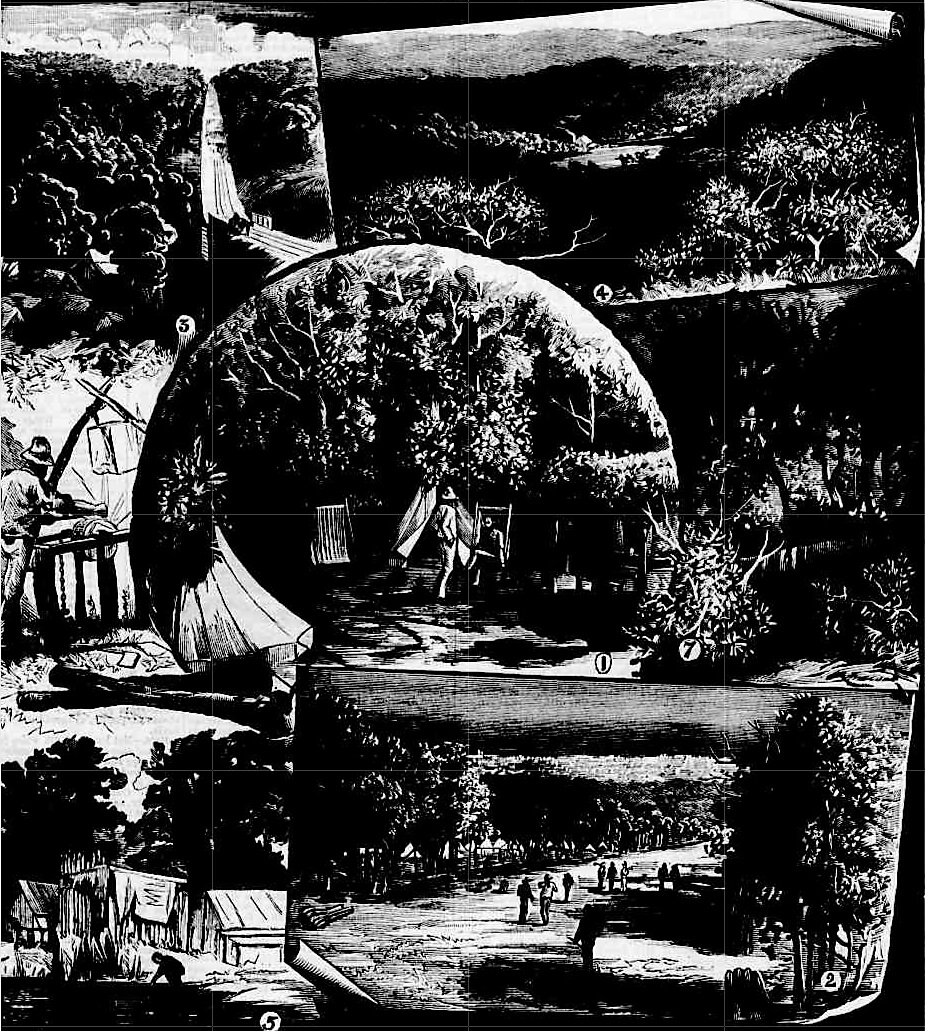
1. Overseer's' Camp. 2. Main Camp. 3. Pittwater-road (Tram Route to Parramatta). 4. Lane Cove River (seen from the Estate). 5. Camp on Kitty's Creek. 6. Grinding Axes. 7. Sylvan, Scene on the Kitty's Creek.
The Colonial Secretary, it may be remembered, at a critical period in the depth of winter, and owing to the disorganization of the labour market, through the late disastrous drought, which so severely affected the whole colony, felt himself called upon to give employment to some hundreds of " unemployed '' who thronged the streets of Sydney, and were reduced to great straits. The common of the Field of Mars has been cleared by some of these men, and is now surveyed and laid out in roads, streets, and allotments, the acreage" of the latter and the width of the former being defined and accurately shown on the maps. We have been informed that this splendid tract of land will be thrown into the market very shortly for sale by auction, as villa sites,and the situation of some of the sections, overlooking the Lane Cove River, are exceedingly fine. The wildness of rugged crags in shapeless grandeur and primeval form, offering a singular contrast to the soft foliage of the far away bush, dotted here and there with a solitary homestead, nestling in, and gleaming white against the dark background, and the placid river flowing at our feet.
The common is to be approached by a tramway which is to run through Balmain and Gladesville, crossing Stranger's Creek, where an elegant bridge is to be erected, the material for which is now on the ground. This tramway will traverse the common on its eastern side, then proceed in a northerly direction along a main road to Pittwater, and form a loop of a line to be taken from Ryde to Pittwater. The common of the Field of Mars is also comparatively of easy access from the Figtree Wharf on the Lane Cove River, and also by the Parramatta River from Ryde or Gladesville, from each of which it is about equi-distant. The acquisition of land here for villa sites, of an exceptionally pleasing and attractive nature, will doubtless have consideration from those in search of a retired and select location, and it is said the idea is to make this quarter very select-a second Potts Point in fact. On the ridges the soil is of good quality, fit for orchards and vineyards ; the timber is chiefly young mahogany, bloodwood, and gum. Other portions possess soil of the richest description, and for speculators will, no doubt, when offered for sale, be provocative of keen competition. There is a cemetery 27 acres in extent which has been thoroughly cleared, and is apportioned for the various sects and denominations, and will be shortley dedicated and handed over to trustees. From its centre may be obtained one of the prettiest views of the village of Ryde and its church.
Where it rises above the graves on the hill, Silent and sad, and sombre and still.
If the idea of the aristocratic officials to develop a fashionable suburb be accomplished, the piece of country -which has been cleared by the men who sought employment from the Govern-ment offers special advantages, easy of access, a salubrious climate, a rich and fertile soil, and exquisitely beautiful scenery. The roads are all open to excursionists, whether on horseback or by conveyance. Camp Life at Field of Mars, Ryde. (1884, December 13). Australian Town and Country Journal (Sydney, NSW : 1870 - 1907), p. 26. Retrieved from http://nla.gov.au/nla.news-article71021325
THE PROPOSED ST. LEONARDS TRAMWAY.
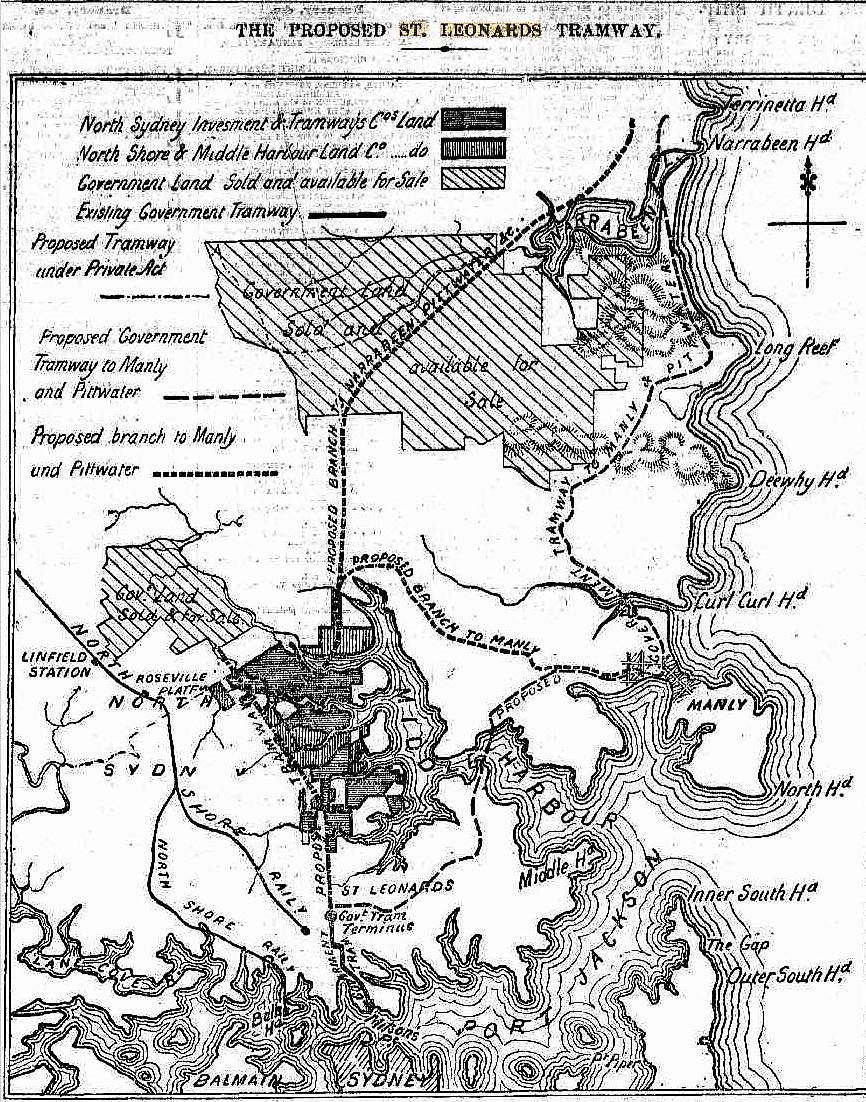
Though within easy distance of Sydney, very little is known of the magnificent charnpaign country lying contiguous to the many bays which are to be found in Middle Harbor, certainly the most beautiful portion of our beautiful harbor." The many who take the trip round the harbor, going up its glorious waters up to Green Cape, seen on either side steep, rock -guarded uplands, with a rich mass of verdure clothing them with perennial green ; but few have explored these uplands from the land side, or have any conception not only of the goodness of the land but of the magnificence of the views to be obtained from almost every point. Here, extending north of Si. Leonards, is a grand sanatorium— a large extent of country in its native state, consisting of undulating land covered with heather and thick undergrowth, running eastward towards the waters of Middle Harbor. Some time since this attractive area, which hitherto had lain idle, being cut into allotments mainly owned by one man, attracted the attention of two gentlemen who saw that bore was an opportunity of bringing these magnificent sites for suburban residences within easy access of Sydney, opening out country with the finest uplands, breezy and health-encouraging, running on towards the waters of Middle Harbor, and at the same time forming a straight route on to Pittwater and Narrabeen, two place which in the near future must become of increased importance, not only us holiday resorts but also as settled centres of industry. The idea was that a tramway line carried from the present terminus of the North Shore cable tramline at the corner of St. Leonards Park, straight along Miller-street, on through the municipality of North Willoughby to a point near the head waters of Middle Harbor would not only be a good speculation but would also be the means of bringing into existence a new' suburb, which in point of picturesque beauty of scene would outrival many of the beautiful outskirts of the city. A thousand acres of ground shown' in the annexed plan marked with horizontal and perpendicular lines were acquired by purchase by Mr. Andrew Armstrong and Mr. James Alexander Brown, each owning 600a., and after much consultation and many and varied calculations it was decided to get permission, if possible, from Parliament to construct a tramway to the extremity of the property so acquired. After some trouble the matter was brought before Parliament, and on July 18, 1887, an Act was assented to authorising Messrs. Armstrong and J. A. Brown to construct and maintain a tramway along the proposed route.
The description of the tramway in the Act is from the terminal point of construction of the St. Leonards cable tramway, along Miller-street, Palmer-street and Bellevue-street, in the town and municipality of St. Leonards, and through certain private land, across French's-road, Mowbray-road, M'Lellan-street, -Victoria-avenue and along Murano-road, in the municipality of North Willoughby. It was specified in the Act that the tramline should not occupy in any part of a road or street a greater space in breadth than 22ft. including the support and foundations ; that it should be constructed and brought into use within three years from the passing of the Act and constructed In a workmanlike manner that nothing should impair the lawful authority of the municipalities of St. Leonards and North Willoughby or of any other corporation to construct, maintain and preserve gasworks, water works, sewerage works and other works lawfully constructed under ground ; that the gauge of the tramway should be 4ft. 8 ½ in. that it should be laid with rails subject to the approval of the Commissioner for Railways; "that the promoter should maintain in perfect order the tramway and the pavement of the streets between the rails and for the space of 1ft. Oin. on each side of the rails, and should erect all necessary causeways ; that they should emptor electricity, locomotive engines, stationary engines with cable connection, horses, or other moving power ; that they should be responsible for all injuries caused through negligence or improper construction ; that regulations should be framed, but none or' them should authorise the closing of the tramway between sunrise and sunset, except at any time when In consequence of any of the works being out of repair it should be necessary to close the line or any part of it ; and finally, that the Government should have power at any time to purchase the line at its then assessed value.
After this the land, which had been purchased by Messrs. Armstrong and Brown, who were the real fathers of the scheme, attracted the attention of a number of capitalists, and two companies were formed, who in December, 1887, and January, 1888, acquired the whole of the land. The first of these was styled the North Sydney Investment and Tramway Company, with a nominal capital of a million sterling, and the land owned by them is shown on the map marked with horizontal lines. The second company the North Shore and Middle Harbor Land Company, with a nominal capital of £1500,000, has its property distinguished by perpendicular lines, and as will be seen, this company own two pieces of land away from the proposed tramline, the one to the left an area known as the Royal Park Estate, and the other an allotment 270a, in extent on the opposite side of Middle Harbor, near where there is a further proposal to erect abridge for a road or train extending from the proposed line. This area of ground which has been bought with a view to further, development has a water frontage on the main waters of Middle Harbor, commencing at a point situated just above a small cove, where the steamers plying usually turn and close to an exquisite spot — a crag bound little peninsular extending to the water, covered with a beautifully green carpet of turf surrounded by rich and variegated, woodland foliage. This spot was a favorite resort of Sir Hercules Robinson when Governor of New South Vales, and he and his family and friends were wont to come here picnicking. The whole of this property, owned by two companies, is well adapted for residential purposes. The total length of the proposed line is about three miles and a half, the distance from the present cable tram terminus to the bridge at Long Bay being one mile, and it is stated that will present but few engineering difficulties.
THE LAND PASSED THROUGH.
Hitherto the whole of the large area of country situated within the boundaries of the borough of North Willoughby, and extending back to the parish of Gordon, has been to a great extent cut oft' from communication with Sydney in consequence of the rugged gorge formed by the waters of Long Bay, the southernmost arm of Middle Harbor, the waters of .which extend a long distance westward, terminating in what in summertime is a Huge canon with steep sides, mid at whose bottom lie huge boulder, through which the course of g . creek 'is discernible, its existence being marked only by. here and there a limpid pool of water and its sides, rough, uneven land, which might be utilised without trouble, and on the slopes of which arc dotted here and there a number of residences of all kind, some of them of the most primitive type. The design of the proposed tramline, which is to be at once proceeded with, is to bridge this chasm and to open out in the first instance the areas running on the one side out through the territories included in the borough of North Willoughby comprising the lauds through which the railway to Crow's Nest runs, and on to the unimproved and at present, owing to the unwillingness of the proprietor to sol unimprovable, estate owned by Mr. David Berry, the whole of the original grant known as .Wolstoncrofte, and on the other the areas running eastward to though shores of Middle Harbor and its numerous offshoots. This latter is comprised in four distinct ridges ; the first and the largest of the four in point of area, bounded on the south by Long Bay and on the north by Mowbray Bray : the second between Sailor's Bay and Sugar Loaf Bar ; the third a beautifully-situated promontory on either side of what is known as Sugar Loaf Bay ; and the fourth washed on either side by the main waters of Middle Harbor up to beyond its navigable waters. This is in effect the design, of the first portion of the scheme shown on the plan, but its extension is contemplated on to Pittwater with a detour to the west to Manly.
Taking the tramline as proposed, the first portion will run from the present terminus of the cable tramway, (by the Government) at the south-western corner of St. Leonards Park along Miller-street for a -distance of a little over a mile to the waters of Long Bay, and will bring into direct and near communication with Sydney the whole of the northern portion of the borough of .St. Leonards, as on either side of the. line there is a large population, with spacious well-formed streets. The whole of the land to the left of the line is portioned off into streets up to the boundaries of the Berry Estate, a small portion of which has been alienated. And on this stand numerous residences and places of business, besides several public buildings, including the pretty cottage hospital—a credit to the borough, which was formally opened by Sir Henry Parkes less than a year ago. To the right of the line is the St. Leonards Park — a well laid out public reserve —which is yearly being Improved; while beyond, a little, further to the westward, below Ernest-street, is situated Cammeray Park, a triangular piece of ground through which passes a road leading to Cammeray Point, whilst in a once sequestered nook, which has been of late invaded by a tramline leading to Borne quarries at the extremity of a little harbor is situated Folly Point, approached by a road formed by the St. Leonards corporation, a favorite boating and fishing resort, but which is not. used as it might be owing to the difficulty of access from Milson's Point. The gorge at Long Bay is to be crossed by a handsome suspension bridge, and after crossing this the line enters upon the territory of the borough of North Willoughby.
At present the only means by which this borough can be reached from Milson's Point direct is by the Sydney-road, a well-formed thoroughfare, whilst the bay as it is still called, though it really is a creek, dry in summer but a roaring torrent after heavy or even moderate rains, has been spanned through the energy of the North Willoughby Council by a massive stone bridge, which cost somewhere about £5000. Near here, perched on the heights, are the residences of Mr. Thomas Datton, M.P., and Mr. Douds, M.L.C. Passing over the bridge the road ascends, and though the land is pleasant and the scenery delightful there is not much settlement until what is known as the Central Township is reached, a beautifully laid out little village, where there are numerous pretty residences and a large tannery, the most extensive to be found around Sydney, owned by the Messrs. Forsyth, who have taste-full villa residences in the vicinity. The whole of the rest of the country to the westward of the land, including Mowbray Park, the township of North Sydney, Alleyne Park, the Artarmon Estate and numerous other allotments — some merely fenced in, others lying waste, and others again built and settled upon— is a rich country, where gradually people are finding their way, and which only wants an impetus such as a tramline should impart to make it one of the gardens of New South Wales. As an instance of progress, it may be stated that out in this now distant and but little-known suburb, at a spot whore there is but a straggling population, Mr. Museton is meeting a line hall to be called the Centennial.
But after all in connection with the tramway, it is the land situated to the eastward, with some seven miles of frontage to Middle Harbor and extending from Long Bay to the topmost arm of the harbor, which will give it Its chiefest charm and value. No finer views are to he obtained near Sydney, and the combination of water and wood and tree and fern, upland and valley and clear heathland and rocky defiles, clothed with all the rich flora and ferns of New South Wales, are all beautiful. The whole of this country is owned by the two companies who hare taken in hand the task of constructing and carrying on the tramway, with the exception of a few stray allotments which are shown in our plan, and several valuable reserves which have been retained, but never up to the present time used by the Government. The first ridge through the extremity, of of which the tramway will pass is bounded on the south by Long Bay, with a curious inlet known as Saltpan Creek, which many years ago was looked upon us a natural dock, and which it was intended should be used for Government purposes. This is included in a large reserve designed partly for a site for harbor defences and partly for a training school for boys from the ship Vernon, but up to the present it remains wild and unimproved. The whole of the land on this peninsula has been partially cleared and a fine roadway formed, whilst from a lofty dome-shaped hill which rises abruptly from the surrounding plateau an attractive view of the harbor and its tributaries is to be had. Below, abutting sharply on the water is Figtree Point, a well-known resort by persons voyaging into these waters, and at the northernmost extremity of the promontory a piece of laud known ns Albert Town, with a park reserve adjoining, to which the rood, which has been formed partly by the company and partly by the borough council, descends. Opposite is the curious point known as Quaker's Hat and a rich flat, which some time or another must become valuable. All the land on this area is well adapted for residential sites. The ridge beyond this is intersected by Mowbray-road, and the character of the land is similar, though in parts more rugged, while the scenery as we advance northward assumes a bolder and more mountainous character, softened always by the glorious stretch of water which spreads itself in all directions, terminated by lovely bays and rich campaign areas. The most northerly of the ridges, and by far the most beautiful, is at present approached by the Teralba-road leading from Alleyne Park and descending to the bond of Sugarloaf Bay, where there is a considerable settlement. A creek runs in to the bead of the buy, and along its banks are two tanneries and a number of pretty residences, all surrounded by gardens and orchards; in fact, everywhere in this fertile region fruit trees seem to flourish to an astonishing extent, and wherever the hand of man has been at work luxurious gardens are to be found. On the heights to the southward of Sugarloaf Bay, near Mount Wilson, there is a large Chinese garden of some 21 ha., owned by a man who in years past was a celebrity amongst his countrymen, one Chenateak, and here a large vegetable trade is done. At the back of the garden there is a joss house which is used by the numerous Chinese gardeners, who have made for themselves a home in various likely spots throughout the borough of North Willoughby— In fact, wherever water was to be found.
The proposed tramway terminates on a crested hill, known as Echo Farm, after crossing a rock-embrasured creek which just below the tramline passes through a series of rocky' basin, and then tumbles over a precipice, forming n waterfall some 70ft. or 80ft., the sides of this narrow gorge, only about 10ft. in width, being covered with ferns and every species of flora and shrub. As opening out this magnificent country and thus bringing within easy reach a land but little known either to the tourist or the resident of Sydney the tramline proposed, apart from any profit it must bring to the companies who have obtained permission to construct It, must be regarded as a public benefit." Its extension, as contemplated, on to Manly and further afield to Narrabeen and Pittwater, in lieu of the line proposed through St. Leonards and across the Spit by means of a bridge, is a matter only of time. THE PROPOSED ST. LEONARDS TRAMWAY. (1889, January 19). The Daily Telegraph (Sydney, NSW : 1883 - 1930), p. 9. Retrieved from http://nla.gov.au/nla.news-article235866189
The bridge referred to above was originally called the North Sydney Bridge. The depression of 1892 saw both companies go into liquidation and at that point the name Northbridge began to appear. This downturn was caused by a number of factors including a severe drought, the sinking of wool, wheat and metal prices, and most of all, the withdrawal of British investment in NSW on a major scale.
The plan for a train to Pittwater persists:
TURNED DOWN. A SUGGESTED RAILWAY. GORDON TO PITTWATER.
In ten years time you might have a chance: to-day you have none. This in effect was the reply made yesterday by the Minister for Works to a deputation which waited upon him with a request that he would favourably entertain the building of a railway from the North Shore line in the neighbourhood of Gordon or Pymble across to Pittwater with Broken Bay as the final objective. The deputation lacked nothing in numbers. There was a strong representation of the Kuringai and Warringah Shire Councils, of the Kuringai Ratepayers' Association, and of the Pittwater Progress Association It was introduced by Mr. Wade who with Dr Arthur emphasised the advantages to be derived from the construction of the proposed line. Dr Arthur enlarged on the advantages of throwing open for settlement country that from the standpoint of hygiene lacked nothing. It would be an ideal district he said for testing the Government scheme for erecting workmen’s homes. The land lay from 600 to 700 feet above sea level the surroundings were most picturesque and it lent itself well to drainage and sanitation. Since Sydney was increasing at such an enormous rate people would be driven more and more Into the Suburbs and he thought It would be a pity to compel them to seek homes along the low lying parts served by the Western line or along the shores of Botany Bay when such elevated and beautiful country as that lying between the North Shore line, and the ocean could be made accessible.
The Rev. Paul Clipsham president of the Kuringai Shire Council said the country lying between Gordon-Pymble on the one side and Narrabeen-Mona Vale on the other rivaled In its beauty anything to be seen on the Blue Mountains. He had not the slightest doubt that if the line were constructed it would develop an enormous passenger traffic. A line 17 miles long would open up the district well and seeing that there are no engineering difficulties to be overcome, he did not think It would be an expensive line to build. Apart from that it would greatly enhance the use of Crown lands through which the railway would pass. In all probability it would pay almost from the start. It would run through St Ives one of the most thriving fruit growing districts in the state. It would carry heavy consignments of fruit to Sydney and doubtless when communication with Broken Bay was opened up much of the fish supply of Sydney would be carried by It.
Messrs Ralston (president of the Warringah Shire Council) Griffiths, T. W. Taylor, Jones (secretary Pittwater Association) and R D Brown also addressed the Minister In Support of the railway project.
It was pointed out that Broken Bay would play an important part in any scheme of defence and that under these circumstances the Defence Department of the Commonwealth might be prepared to contribute to the cost of the maintenance of the line.
The Minister for Works said one of the stock arguments used by advocates of railway projects was the bearing the line would have upon defence. His business was to build lines not for defence purposes but for the development of the country. If however, there was anything in the suggestion that the Defence Department would pay part of the cost of a line to Broken Bay he would of course go carefully into the matter. He did not need to be told anything about the beauties of the country through which the proposed line would pass. He knew the country and it was the most beautiful country he had ever seen. It was to Australia what the Riviera was to Southern Europe. But he could not give the deputation a very encouraging reply. In time the railway would he made but he could not see his way to regard it as one of pressing necessity. Apart from that it would be enormously costly. The North Shore line cost £55 300 per mile and on that basis it would cost over a million to build the 20 miles to Broken Bay or if the line stopped at Mona Vale the cost would run to three quarters of a million. That was an enormous sum to spend to open up even so beautiful a district as the one in question. It would be a very fine thing for the landowners of the district whose property would be enormously increased in value. The State would get little out of it seeing that barely 1 ½ miles of the line would pass through Crown land. If the railway were justified on other grounds he would not object to making the fortunes of the landowners of the district.
But it was not Justified seeing the larger areas of unoccupied land to which the North Shore line gave access. Within 1 ½ miles of Wahroonga station alone there were hundreds of acres of primeval bush and the same thing applied to other stations along the line. The land was being held by owners, waiting for fancy prices. That land must be settled before the line to Pittwater could be considered. It was the policy of the government to spend what money it could get in building railway to open up wheat and agricultural country.
That was obviously more urgent work than building a railway into residential country which already had a railway on one side and would have an electrical tramway on though other side. It was proposed to have the electric tram service extended to Mona Vale. The line would be built off the road and In order to secure a speedy service the stopping place would be at Intervals of quarter or half mile. For quite a number of years that is all the residents could expect to get. The railway would come some day. Perhaps if the deputation waited upon the Minister 10 years from now they would probably get a more encouraging answer than he was able to give. TURNED DOWN. (1911, November 21).The Sydney Morning Herald (NSW : 1842 - 1954), p. 7. Retrieved from http://nla.gov.au/nla.news-article15290696

Yachting off Kirribilli Point, Sydney - courtesy Tyrrell Photographic Collection, Powerhouse Museum, circa 1891.